Gothic front doors represent one of the most dramatic and architecturally significant entrance styles available to homeowners today. Characterized by pointed arches, rich wood materials, and ornate iron hardware, these doors draw inspiration from medieval cathedral architecture and Gothic revival movements. Whether you're renovating a Tudor-style home or adding historical character to a modern residence, gothic front doors create an impressive statement that combines functionality with timeless elegance. From hand-carved solid wood panels to intricate stained glass inserts, these entrances offer both visual impact and architectural authenticity that can transform any home's curb appeal.
1. Gothic Front Door with Cathedral Pointed Arch
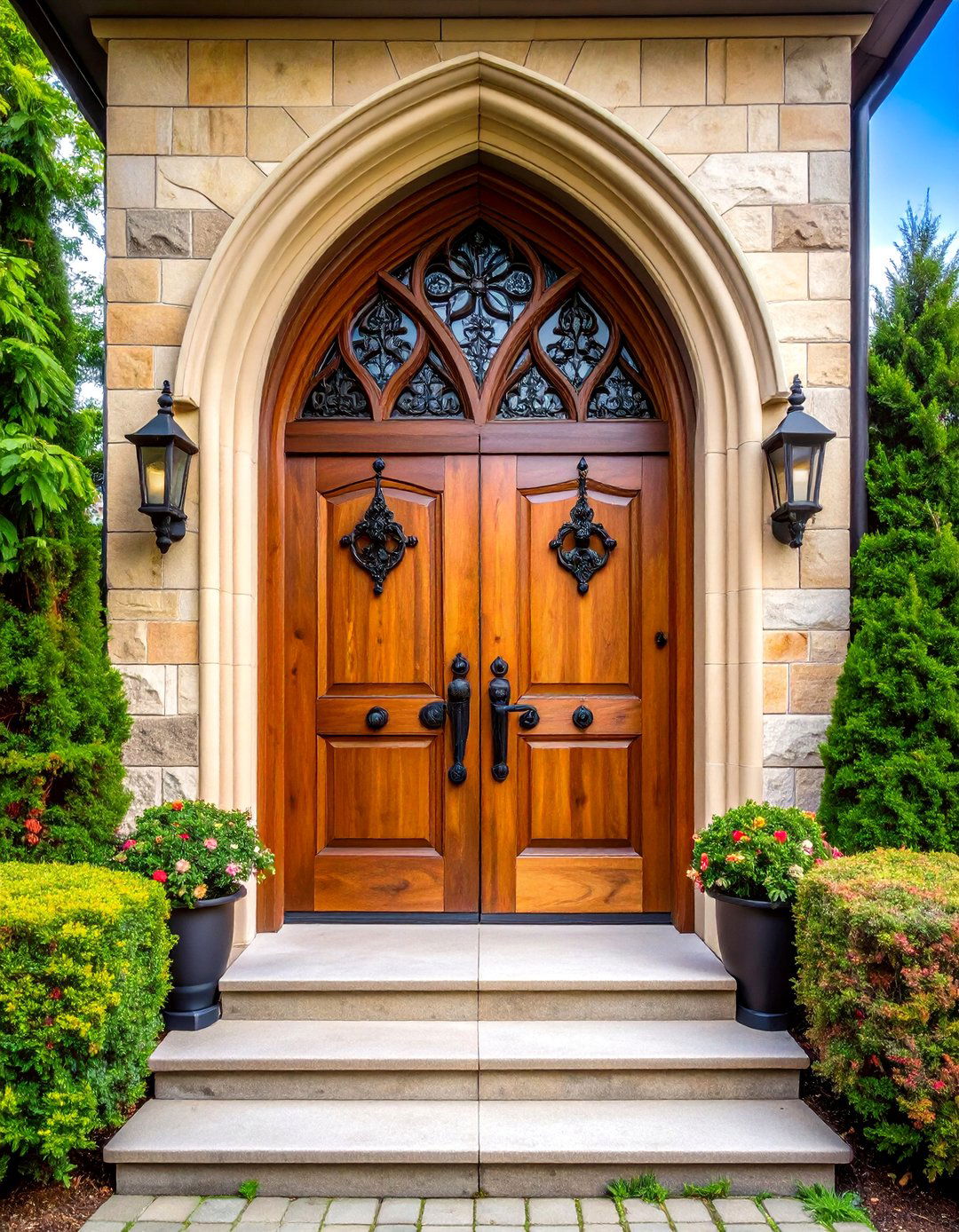
The cathedral pointed arch represents the most iconic element of gothic architecture, creating a dramatic vertical emphasis that draws the eye upward. This gothic front door design features the classic equilateral triangle arch construction, where the arch's span equals the arc radii, providing both structural integrity and aesthetic appeal. Crafted from solid cedar or oak using traditional mortise and tenon joinery, these doors showcase hand-forged wrought iron hardware including medieval-style ring pulls and decorative strap hinges. The pointed arch naturally accommodates tall sidelights or transom windows, allowing natural light to filter through while maintaining the door's imposing presence. Perfect for Tudor revival homes or Gothic-inspired architecture, this design captures the essence of medieval cathedral entrances in a residential setting.
2. Gothic Front Door with Hand-Carved Wood Panels

Hand-carved wood panels in deep relief design achieve the highest degree of quality and detail, carved from premium hardwoods like hard maple, cherry, and white oak. This gothic front door style showcases intricate carved motifs inspired by medieval craftsmanship, featuring geometric patterns, floral designs, or religious symbols. Gothic ornamentation takes its inspiration from nature, with columns sprouting leafy capitals and vines twisting along screens, creating an overwhelming display of decoration. The panels are typically arranged in symmetrical configurations, with multiple rectangular sections creating visual depth and texture. Triple-sanded and ready for stain or paint, these doors allow homeowners to customize the finish while preserving the artisanal carving details that define authentic gothic design.
3. Gothic Front Door with Wrought Iron Fleur de Lis Hardware
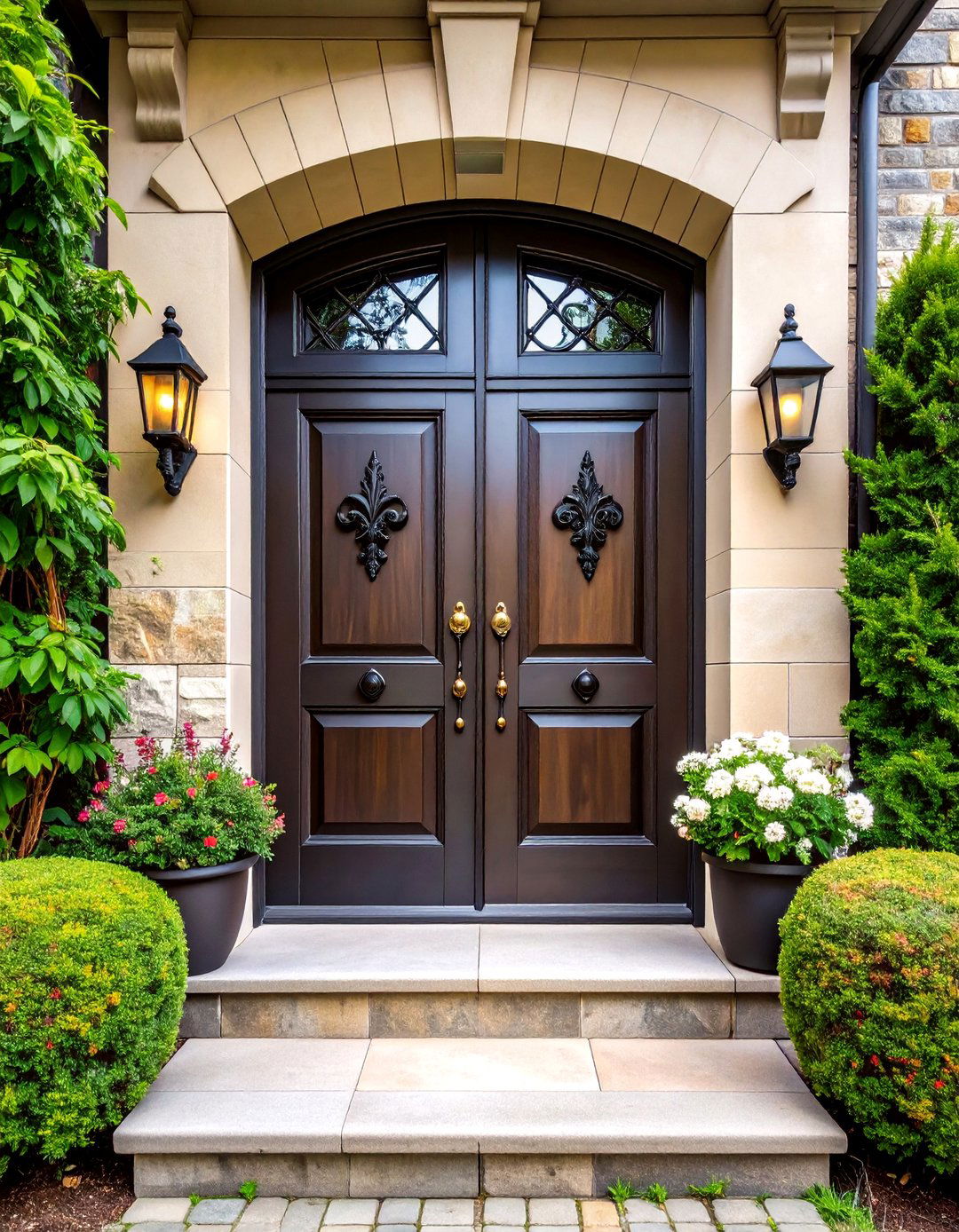
Hand-hammered custom Fleur de Lis door pulls, decorative diamond-shaped wrought iron clavos, and heavy-duty slide bolt locks create an authentic medieval aesthetic. This gothic front door design emphasizes ornate metalwork as a defining feature, with every piece of hardware hand-forged by master blacksmiths over coal-fired forges. The Fleur de Lis symbol, representing the Holy Trinity in medieval Christianity, adds both decorative appeal and historical significance. All hardware is finished with hand-applied iron oxide patina that's heat-infused at over 1000 degrees Fahrenheit, ensuring the finish becomes part of the metal itself. Combined with solid wood construction and gothic arch styling, this door creates a striking entrance that reflects traditional European craftsmanship and attention to detail.
4. Gothic Front Door with Stained Glass Inserts
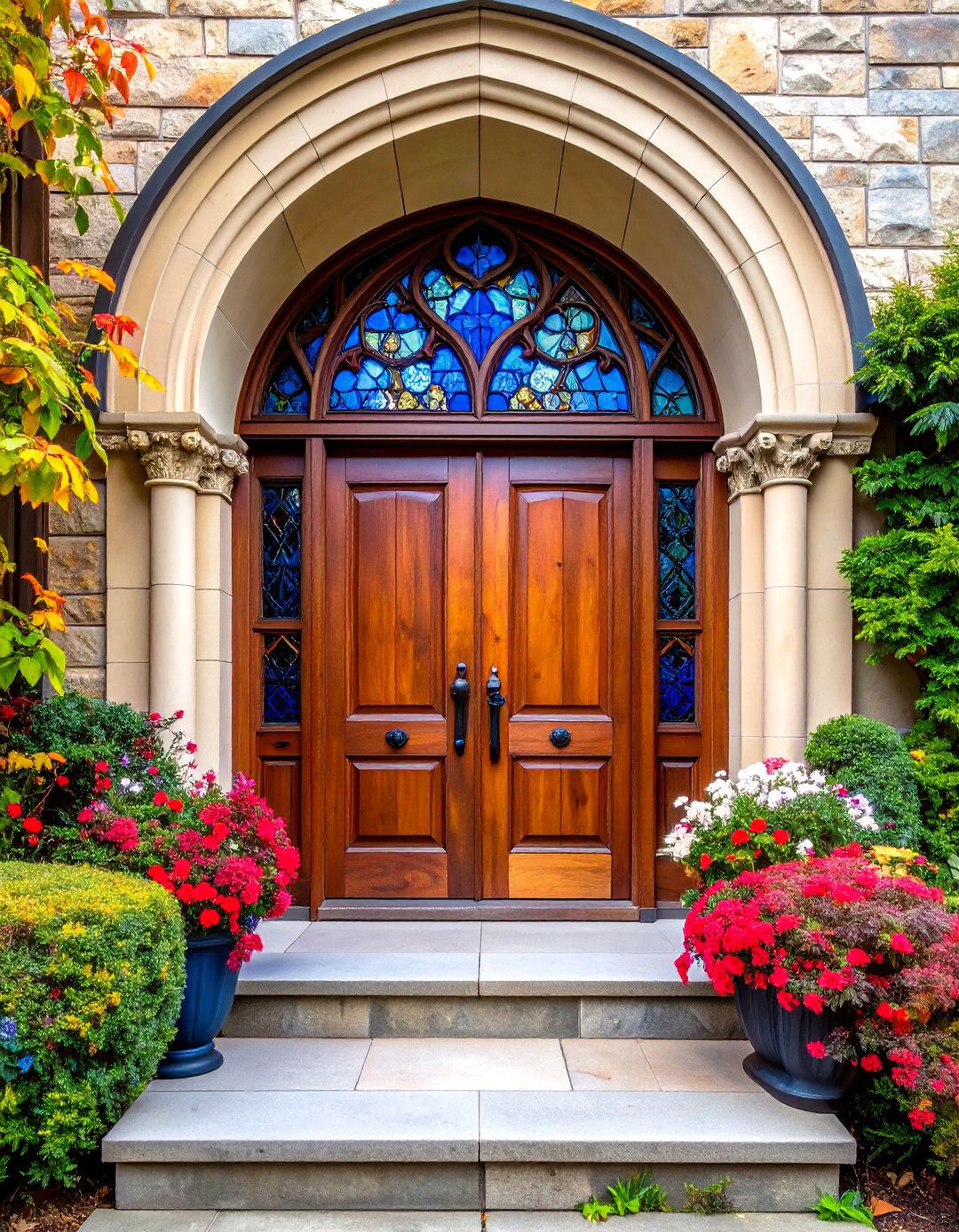
Stained glass windows with their deep, rich blues and ruby reds, often featuring white backgrounds or grisaille decoration, became defining elements of gothic cathedral design. This gothic front door incorporates authentic stained glass panels that filter natural light while providing privacy and visual interest. Gothic stained glass creates a reverent look anywhere, whether displayed as hanging panels or fashioned into backlit illuminated windows. The glass panels can feature religious motifs, geometric patterns, or nature-inspired designs that complement the door's overall gothic aesthetic. Custom-made to any size requirement, these stained glass inserts can be designed to match existing architectural elements while creating beautiful light effects throughout the day. The combination of solid wood framing and colorful glass creates an entrance that's both functional and artistic.
5. Gothic Front Door with Tudor Arch Design

The Tudor arch, a flattened four-centered arch with a pointed apex, provides a wide opening without taking excessive space above, making it ideal for doorways. This gothic front door style represents the English interpretation of gothic architecture, popular during the Tudor dynasty from 1485 to 1603. The arch's lower, wider profile creates a more approachable entrance while maintaining gothic character through its pointed crown and decorative elements. Elements of gothic style are present in Tudor architecture, making these doors perfect statement-makers for Tudor or other ornate-style homes. Often featuring oak construction with iron strap hinges and decorative hardware, Tudor arch gothic doors balance historical authenticity with practical residential use. The design works particularly well with brick or stone facades, creating visual harmony between architectural elements.
6. Gothic Front Door with Iron Strap Hinges
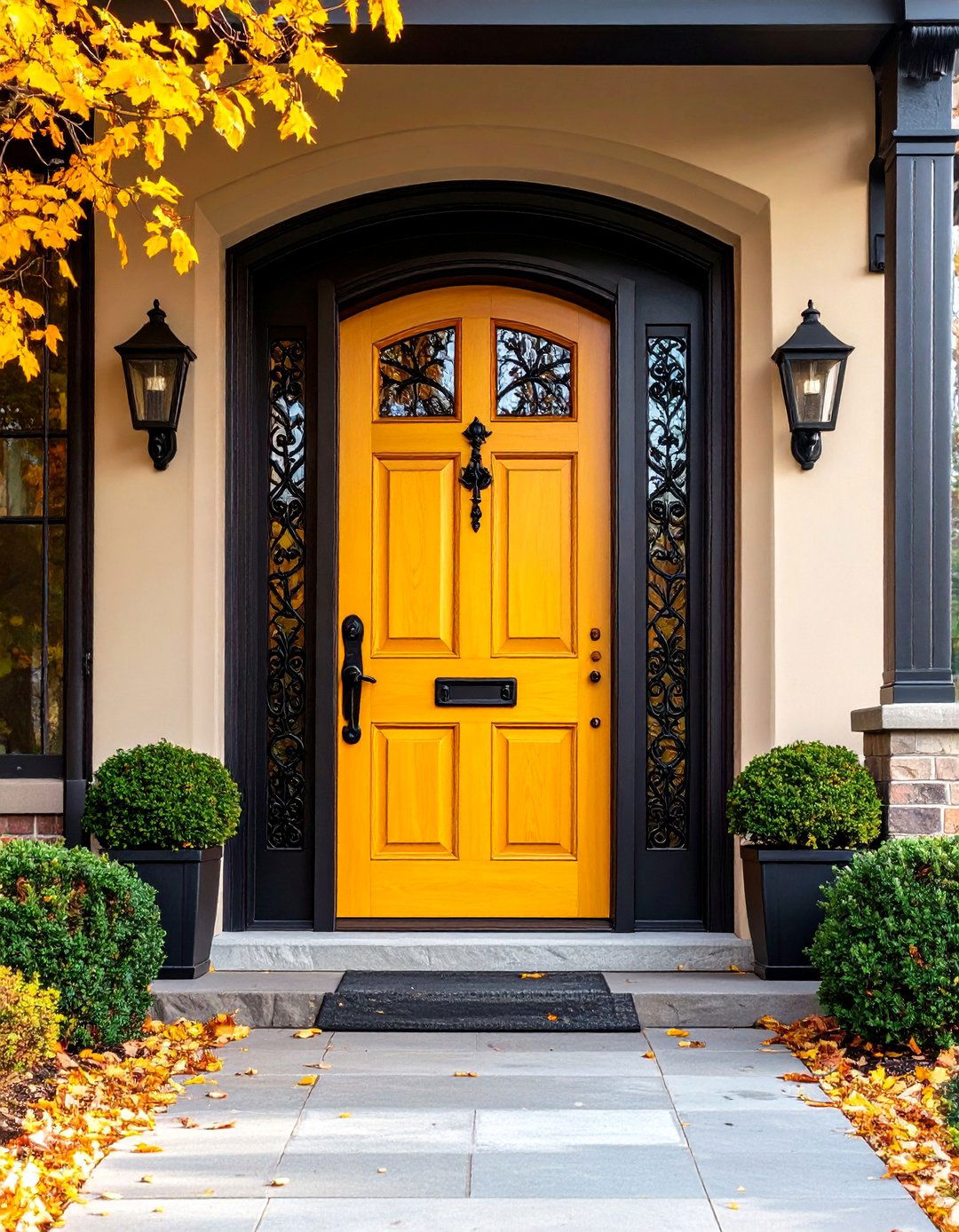
Gothic iron strap hinges feature hand-hammered texture that's anvil-forged using fire, hammer, and anvil techniques from the Middle Ages. This gothic front door design emphasizes functional hardware as decorative elements, with elaborate strap hinges extending across the door's width in flowing, organic patterns. Authentic gothic designs and metal finishes complete the gothic home aesthetic with ornate twisted elements and decorative mounting options. The hinges often incorporate scroll work, leaf patterns, or geometric designs that echo gothic architectural motifs found in medieval churches and castles. Made from solid wrought iron that won't corrode with weather exposure, these hinges provide both durability and visual impact. The contrast between dark iron hardware and rich wood tones creates a dramatic entrance that captures the essence of medieval craftsmanship.
7. Gothic Front Door with Double Door Configuration
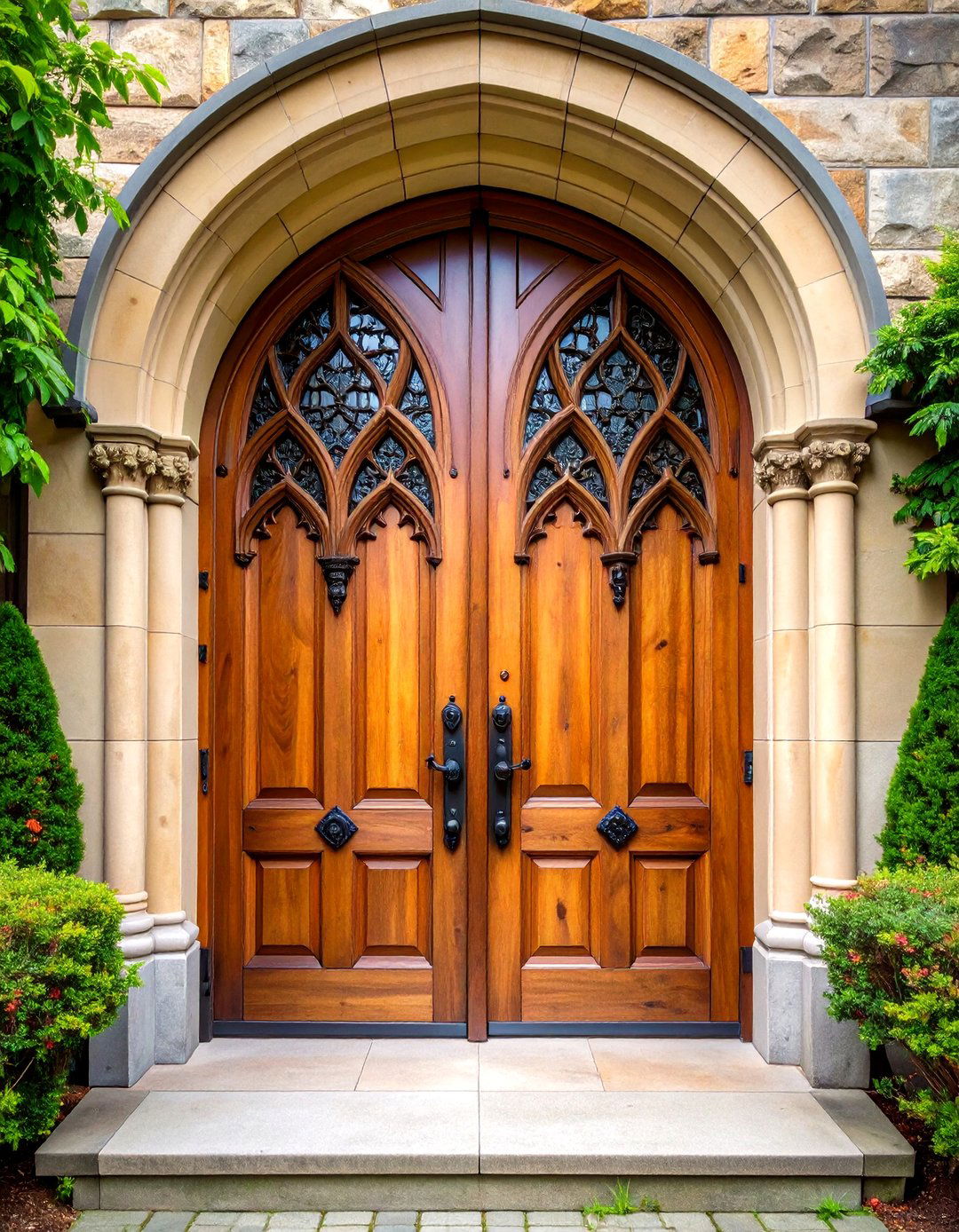
Gothic wood panel double doors feature symmetrical designs with multiple panel arrangements, creating grand entrances that secure with hand-forged wrought iron slide bolt locks. This gothic front door style maximizes impact through scale and symmetry, perfect for larger homes or formal entrances. Each door typically features matching panel configurations, hardware placement, and decorative elements that create visual balance and architectural harmony. Custom hinge straps feature unique medieval Spanish-inspired designs with elaborate decorative elements that match popular medieval door handles. The double configuration allows for wider openings while maintaining structural integrity through traditional joinery methods. Often accompanied by matching sidelights or transom windows, these doors create impressive entrances that evoke the grandeur of medieval castle gates and cathedral portals.
8. Gothic Front Door with Lancet Window Inserts
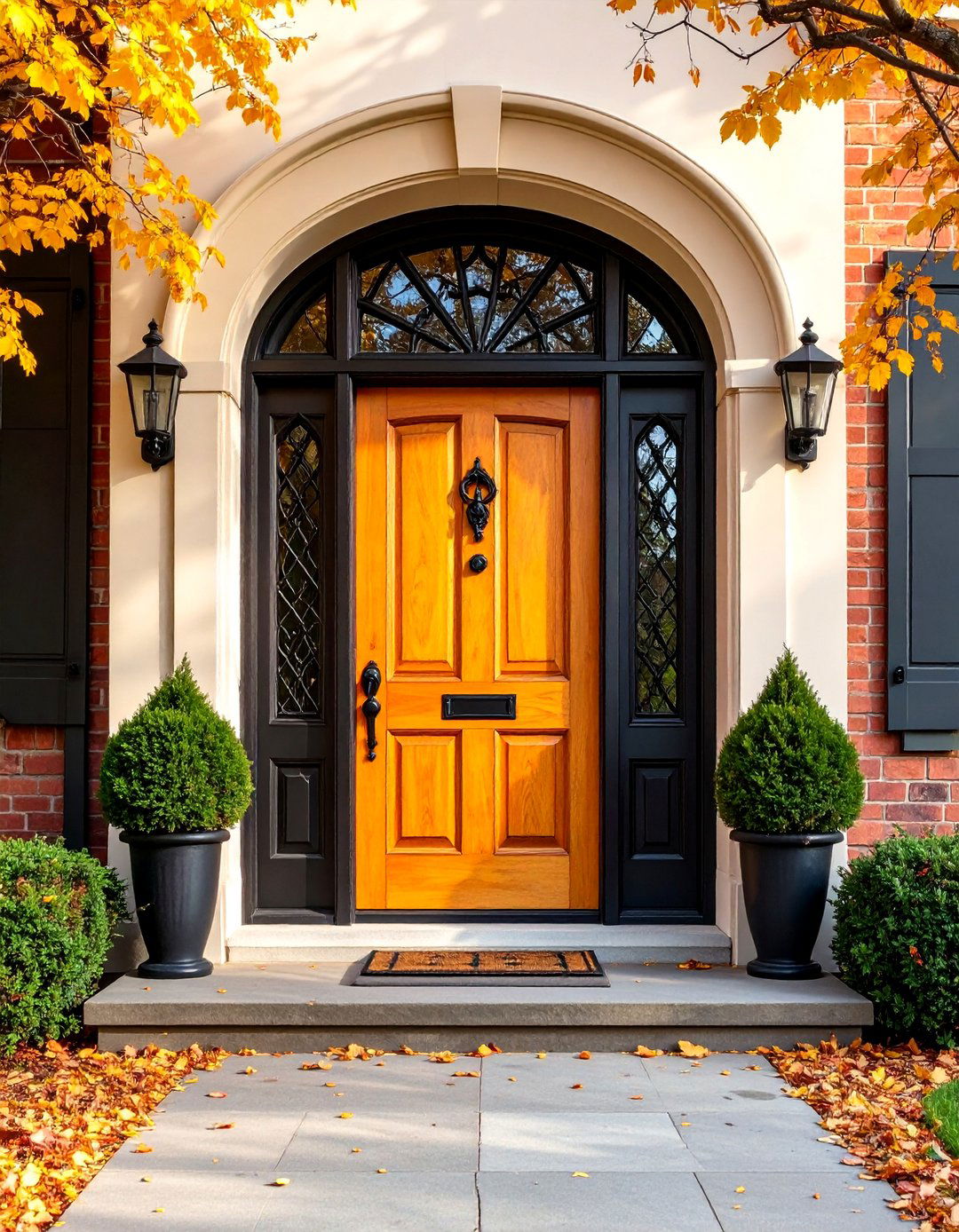
Lancet windows are narrow openings terminating in pointed arches, resembling lance blades and representing the earliest gothic architectural elements before tracery introduction. This gothic front door incorporates tall, slender window panels that maintain privacy while allowing natural light penetration. These kaleidoscopic windows are significantly larger than those found in other architectural styles, allowing more dazzling light while featuring delicate tracery composed of symbolic geometric or floral patterns. The lancet design creates vertical emphasis that enhances the door's gothic character while providing practical visibility and illumination. Often featuring clear or lightly tinted glass with lead came construction, these windows can incorporate subtle decorative elements without overwhelming the door's overall design. The narrow proportions work well with both single and double door configurations, adding architectural authenticity to residential gothic applications.
9. Gothic Front Door with Dark Stained Wood Finish

Gothic style doors have a dominant look built from highly decorative dark stained wood, using deep, rich colors like black, deep green, midnight blue, and dark purple. This gothic front door emphasizes the dramatic visual impact achieved through rich, deep wood staining that enhances grain patterns while creating gothic atmosphere. Traditional finishes include ebony, dark walnut, or mahogany stains that highlight the wood's natural character while providing weather resistance and durability. Premium selected hardwoods like cedar, oak, and maple provide the foundation for these striking finishes that will become cherished family heirlooms. The dark finish creates striking contrast with brass or iron hardware while complementing stone, brick, or stucco exterior materials. This color palette reflects the medieval preference for rich, substantial materials that convey permanence and gravitas appropriate for gothic architectural styling.
10. Gothic Front Door with Stone Arch Surround
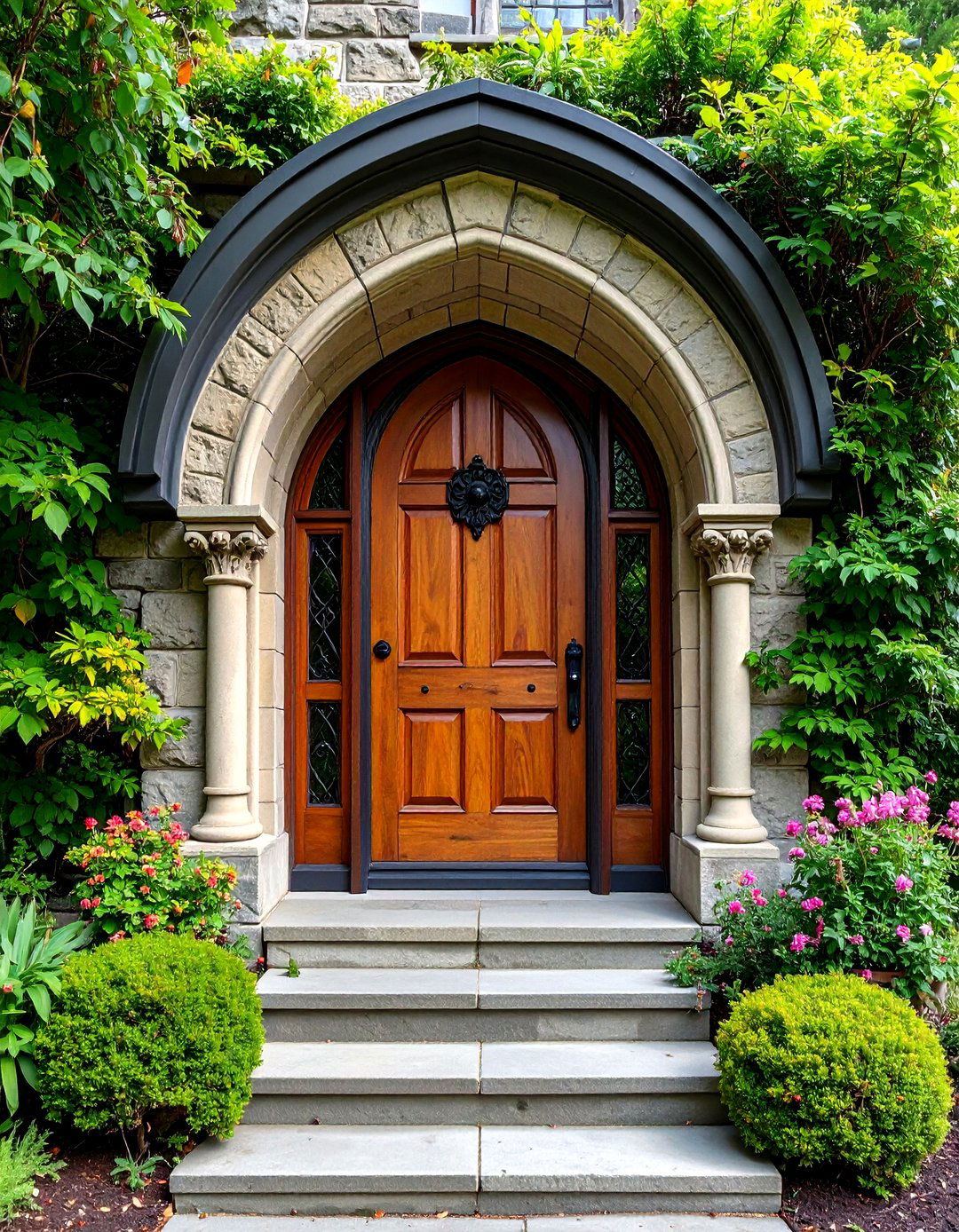
Gothic buildings feature detailed stone carvings that show skilled craftsmanship, with intricate stone work forming a big part of the authentic gothic style. This gothic front door design incorporates carved stone archway surrounds that frame the wooden door with architectural authenticity. The stone work typically features pointed arch construction with decorative moldings, carved capitals, or relief sculptures that echo medieval cathedral portals. Tympanum spaces above door lintels illustrate scenes important to the building's function or history, commonly featuring decorative themes or geometric patterns. Natural stone materials like limestone, sandstone, or granite provide durability while creating visual weight and permanence. The combination of stone masonry and wooden door construction reflects traditional gothic building techniques where different materials contributed specialized functions while maintaining overall design coherence. This approach works particularly well with stone or brick home exteriors.
11. Gothic Front Door with Ribbed Vault Canopy
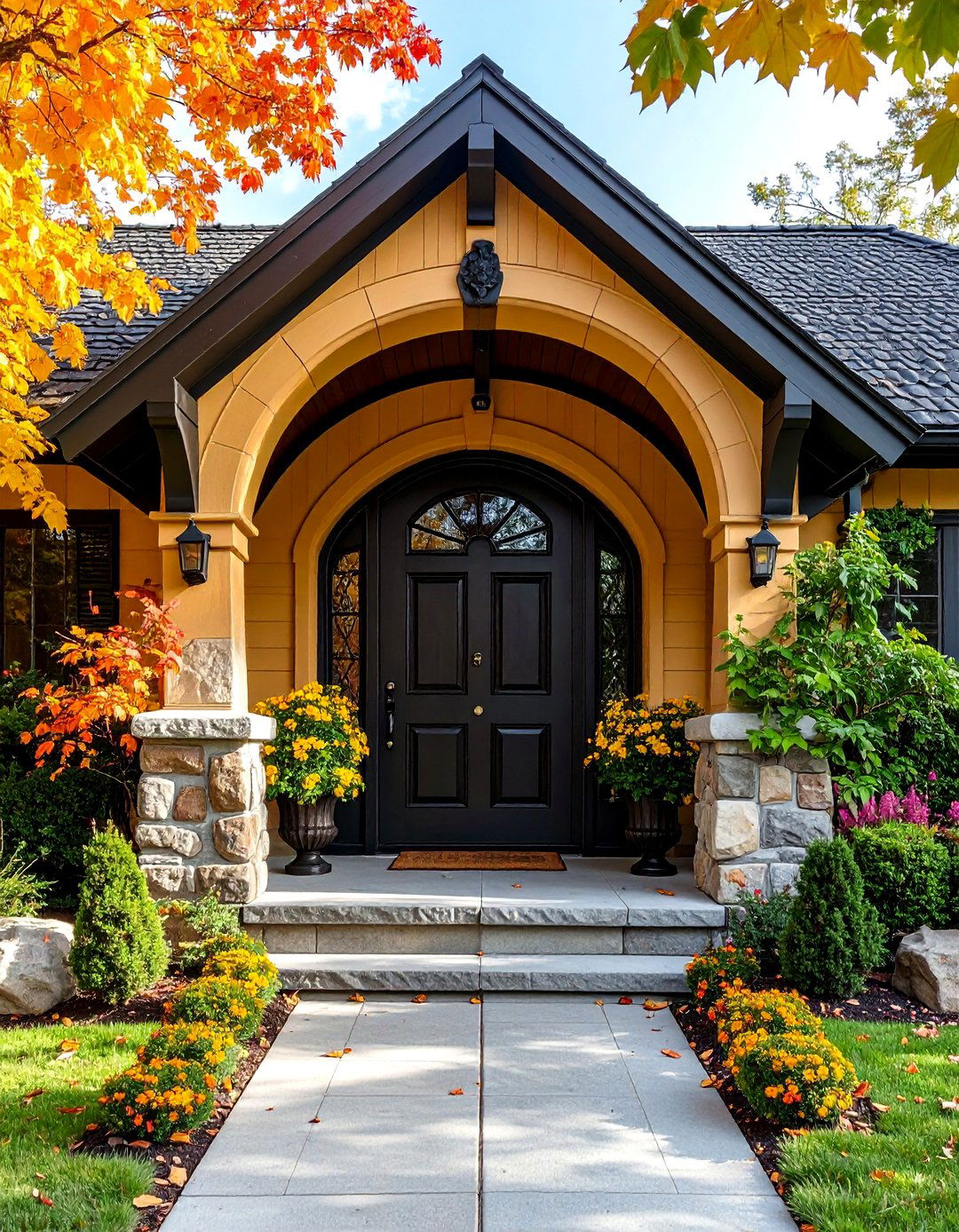
Ribbed vaulting transmits roof and wall weight across delicate ribs down stone piers, representing central architectural features of gothic cathedrals. This gothic front door features an overhead canopy constructed with ribbed vault principles, creating a miniature version of cathedral ceiling architecture above the entrance. The vault structure provides weather protection while adding three-dimensional gothic character through intersecting arched ribs that meet at decorative boss stones. Boss stones function like keystones, supporting massive ceiling weight across immense spans while often depicting theological statements or decorative motifs. Constructed from stone, cast concrete, or heavy timber, these canopies create impressive shadow patterns while demonstrating gothic structural principles. The ribbed design naturally directs water runoff while creating an architectural focal point that announces the entrance's importance. This design works exceptionally well with larger homes where the canopy's scale complements the building's proportions.
12. Gothic Front Door with Gargoyle Decorative Elements
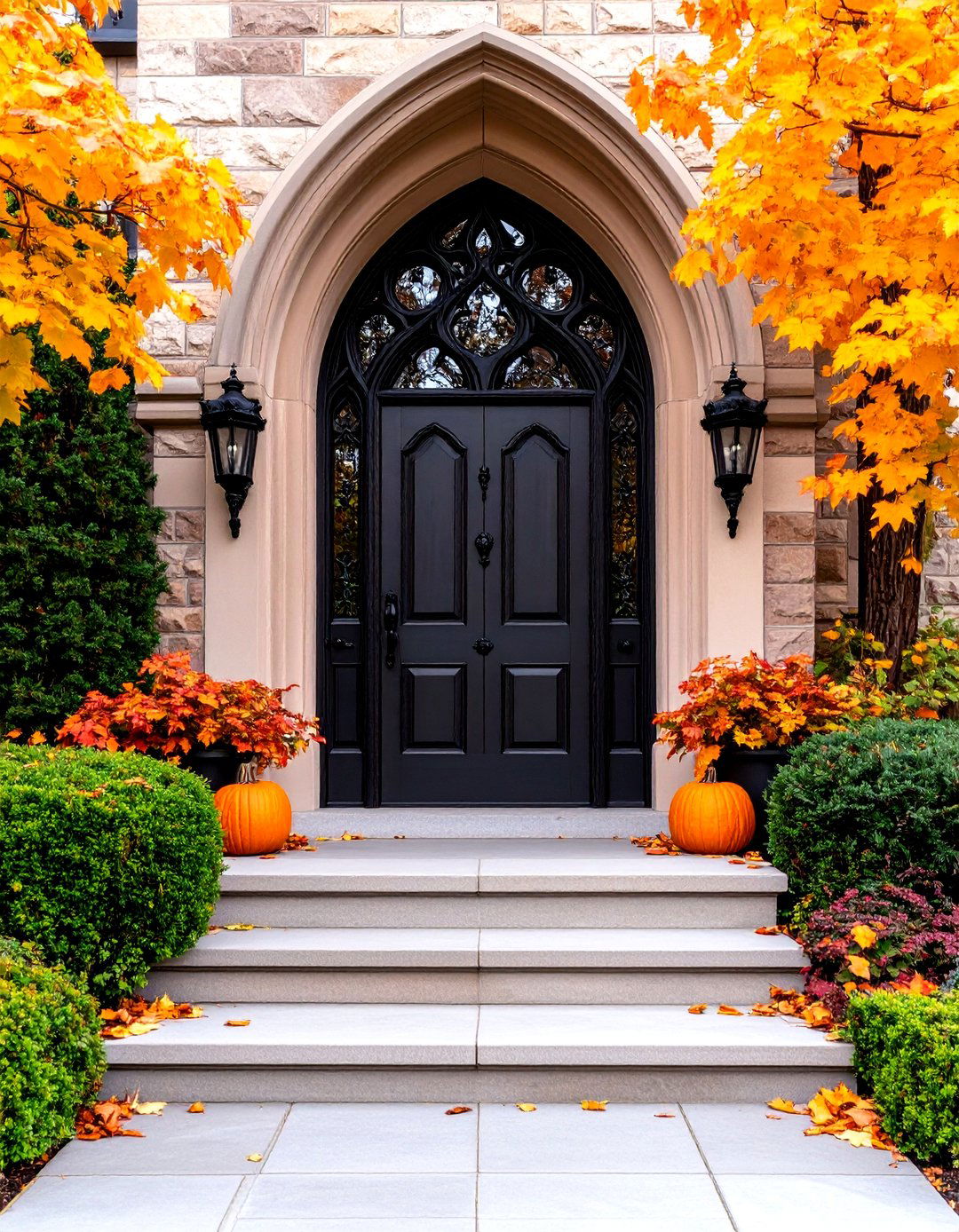
Gargoyles are decorative creatures that stand guard on walls as sculptural waterspouts, preventing rainwater from running down masonry while demonstrating sculptor imagination from humorous to terrifying. This gothic front door incorporates gargoyle motifs as decorative hardware, door knockers, or architectural accents that add medieval character while serving functional purposes. The creatures can be rendered in bronze, iron, or carved wood, positioned as door pulls, corner decorations, or transom embellishments. As gothic architecture developed, sculptures became more human and lifelike, depicting realistic movement and clothing flow. Modern interpretations might include stylized animal forms, mythical creatures, or abstract organic shapes that capture gargoyle essence without overwhelming residential applications. These elements add personality and historical reference while creating conversation pieces that distinguish the entrance from conventional door designs.
13. Gothic Front Door with Pointed Arch Transom
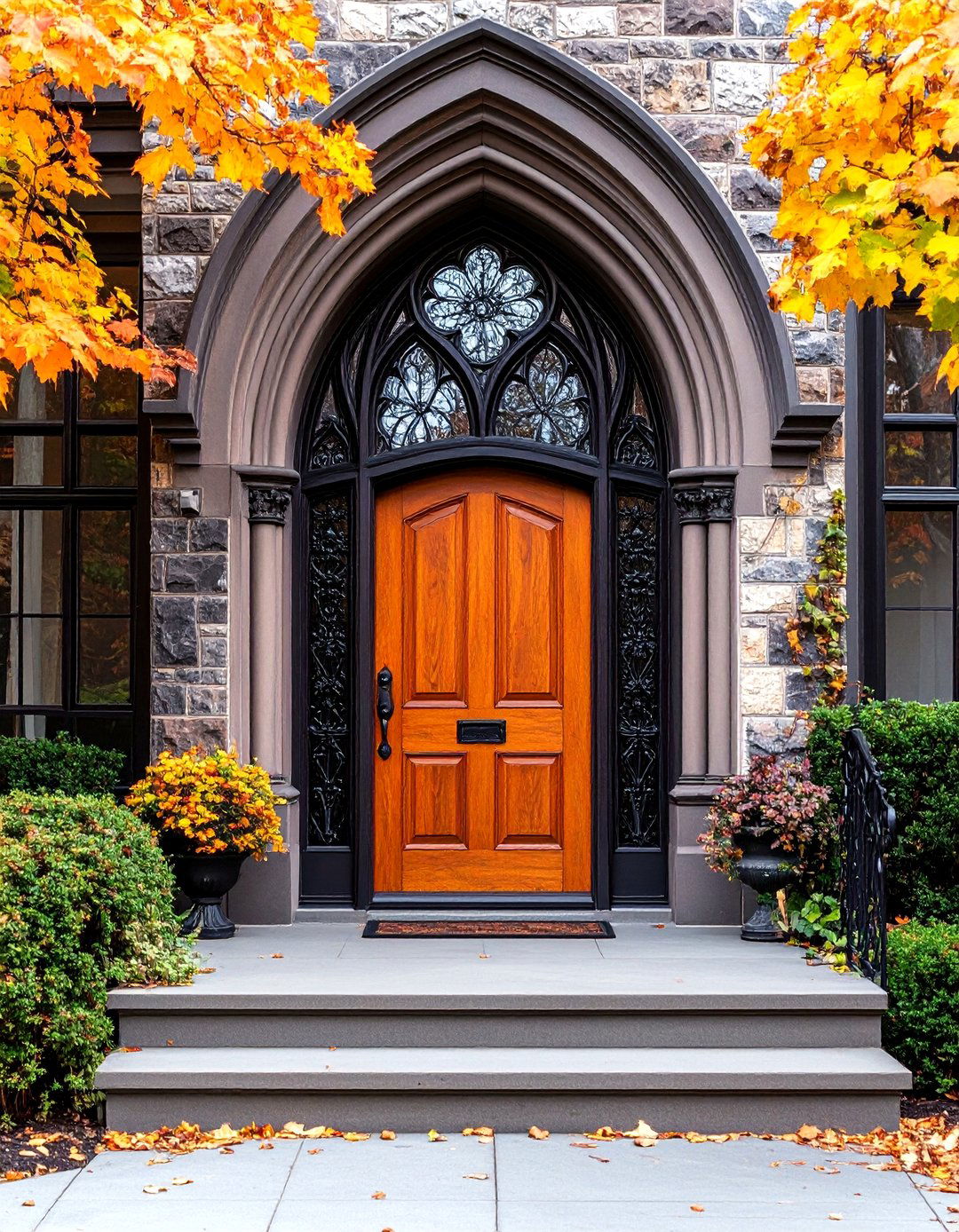
The defining design element of gothic architecture is the pointed arch, which led to development of pointed rib vaults and flying buttresses combined with elaborate tracery. This gothic front door features an overhead transom window constructed with authentic pointed arch geometry that provides additional natural light while maintaining architectural consistency. Gothic stained glass windows are framed in delicate tracery composed of symbolic geometric or floral patterns, constantly educating observers on life's purpose and goals. The transom can incorporate clear glass, stained glass, or decorative glazing that complements the door's overall design while providing interior illumination. Traditional construction uses stone or wood mullions that divide the arch into smaller sections, creating opportunities for intricate tracery work. This design element works particularly well with taller ceiling heights where the transom's proportions enhance rather than overwhelm the entrance composition.
14. Gothic Front Door with Celtic Cross Hardware

Gothic cross hardware features distinctive pointed tips mirroring cathedral spire grandeur, infusing door handles and fixtures with elegance and narrative that transforms mundane objects into captivating focal points. This gothic front door incorporates Celtic cross motifs in hardware design, combining Christian symbolism with medieval craftsmanship traditions. Cast iron and bronze materials add different character to the cross designs, with manufacturing processes involving handcrafting or intricate casting ensuring each piece becomes functional artwork. The Celtic cross variation features the distinctive ring intersection that adds visual interest while maintaining gothic architectural themes. Hardware applications include door handles, strap hinge terminals, lock escutcheons, or decorative clavos positioned throughout the door surface. The symbolic content adds spiritual dimension while the metalwork provides tactile and visual richness that complements wood construction and gothic proportions.
15. Gothic Front Door with Quatrefoil Window Design
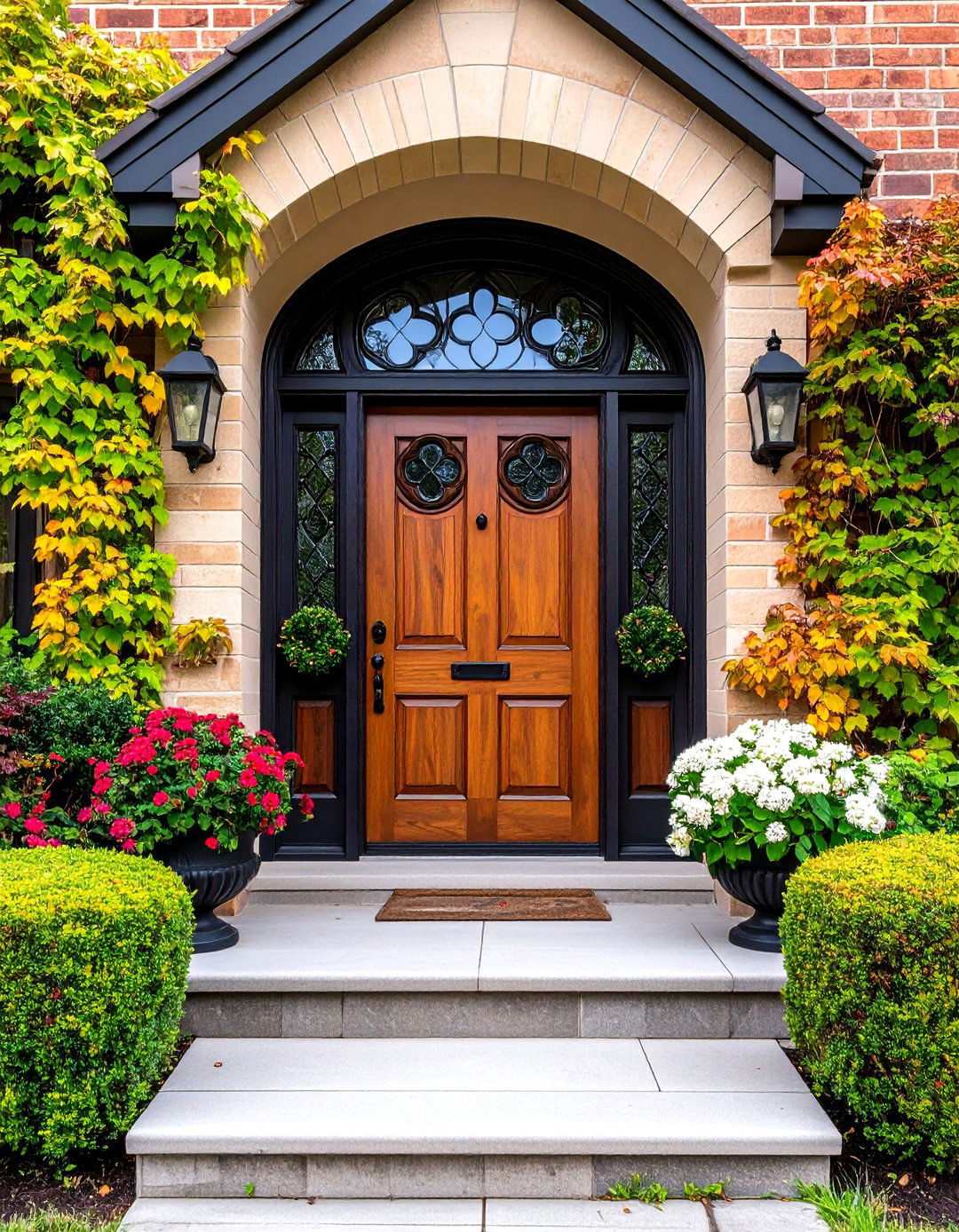
Gothic windows feature geometric designs with four-leaf clover patterns called soufflets, flanked by undulating spindle-shaped mouchettes decorated with cusps in intricate arrangements. This gothic front door incorporates quatrefoil window openings that create distinctive four-lobed circular or diamond-shaped glazed areas. The quatrefoil pattern represents one of the most recognizable gothic decorative motifs, often associated with rose windows in cathedral architecture. Variations of flamboyant window designs created curvilinear stone mullion patterns that resembled flames agitated by wind, giving the style its distinctive name. The glazing can feature clear glass, colored glass, or textured options that provide privacy while maintaining the decorative pattern's visibility. These windows work particularly well in larger door panels where their scale creates appropriate visual impact while adding historical architectural reference that connects residential design to gothic cathedral traditions.
16. Gothic Front Door with Ironwork Security Grilles
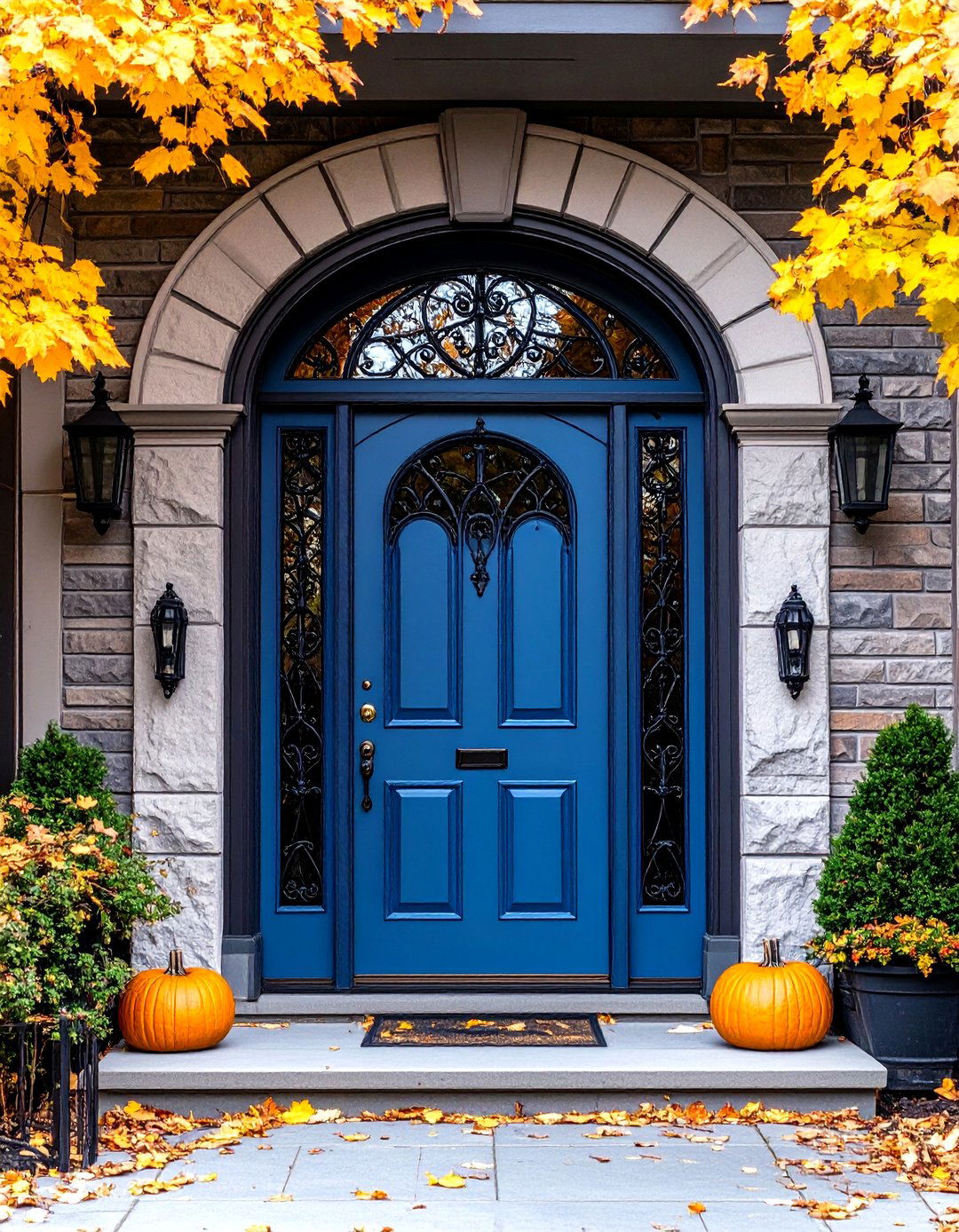
Portal windows with crossbar style hand-forged iron security grilles provide protection while maintaining medieval aesthetic through blacksmith craftsmanship. This gothic front door features decorative iron grillwork that serves dual functions of security and ornamentation, reflecting medieval practices of protecting valuable entrances. Hand-forged wrought iron components are hammered into shape over coal-fired forges using traditional techniques, creating genuine one-of-a-kind pieces that will never be exactly reproduced. The grille patterns can incorporate gothic arches, geometric designs, floral motifs, or religious symbols that complement the door's overall character while providing window protection. Modern applications might include removable panels for seasonal use or permanently installed designs that enhance security without compromising visual appeal. The ironwork creates shadow patterns that add visual depth while demonstrating traditional blacksmithing skills that connect contemporary homes to medieval craftsmanship traditions.
17. Gothic Front Door with Crocket and Finial Details
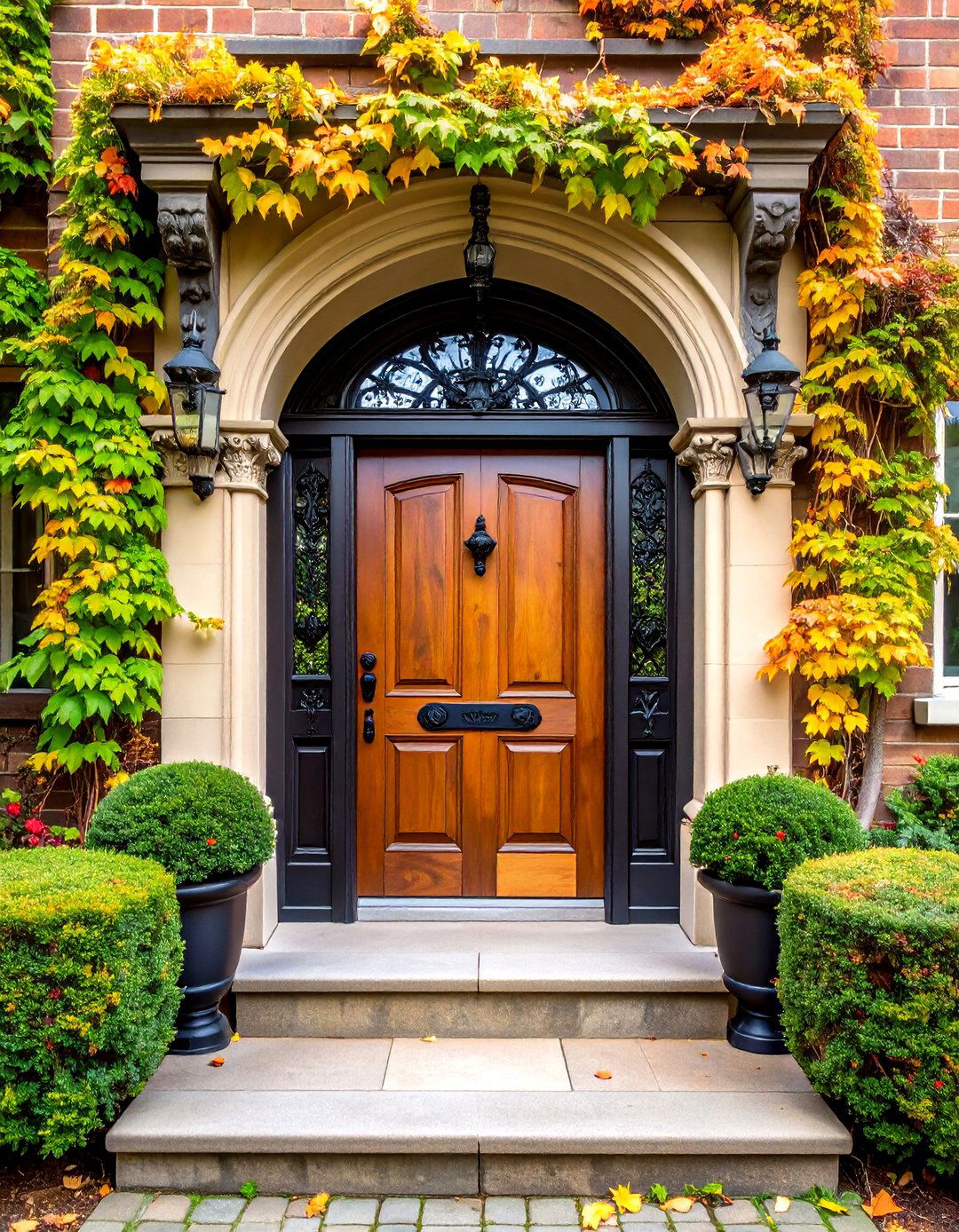
Gothic elements include crockets, typically carvings of curled leaves, buds, or flowers in ball or hook forms that climb up spires and pinnacles, terminating in large finials. This gothic front door incorporates these distinctive decorative elements as carved wooden details, cast metal accents, or applied ornaments that add vertical emphasis and medieval character. Crockets traditionally appear along arch edges, door frame moldings, or hardware elements where they create rhythmic patterns that guide the eye upward. As gothic architecture developed, foliage became more realistic with capitals gradually changing from blocky Romanesque forms into graceful gothic interpretations. Finials can crown door posts, transom peaks, or hardware elements, providing finishing touches that complete the gothic aesthetic. These details work particularly well when scaled appropriately for residential applications, adding authentic medieval references without overwhelming the entrance's overall composition.
18. Gothic Front Door with Rose Window Inspiration

Rose windows are circular stained glass features with geometric patterns that became common gothic cathedral elements, featuring intricate tracery and symbolic designs. This gothic front door incorporates circular window elements inspired by cathedral rose windows, adapted for residential scale and function. Early gothic windows featured deep, rich blue and ruby red colors with geometric designs and expressive figures visible from far below, often set against white backgrounds or grisaille decoration. The circular opening can feature stained glass, clear glass with decorative leading, or solid wood panels with carved rosette patterns. The design creates a focal point that references one of gothic architecture's most celebrated elements while providing natural light and visual interest. These windows work particularly well in larger doors where their scale creates appropriate impact, and can be positioned centrally or as part of more complex geometric arrangements that echo cathedral window compositions.
19. Gothic Front Door with Buttress-Inspired Side Elements
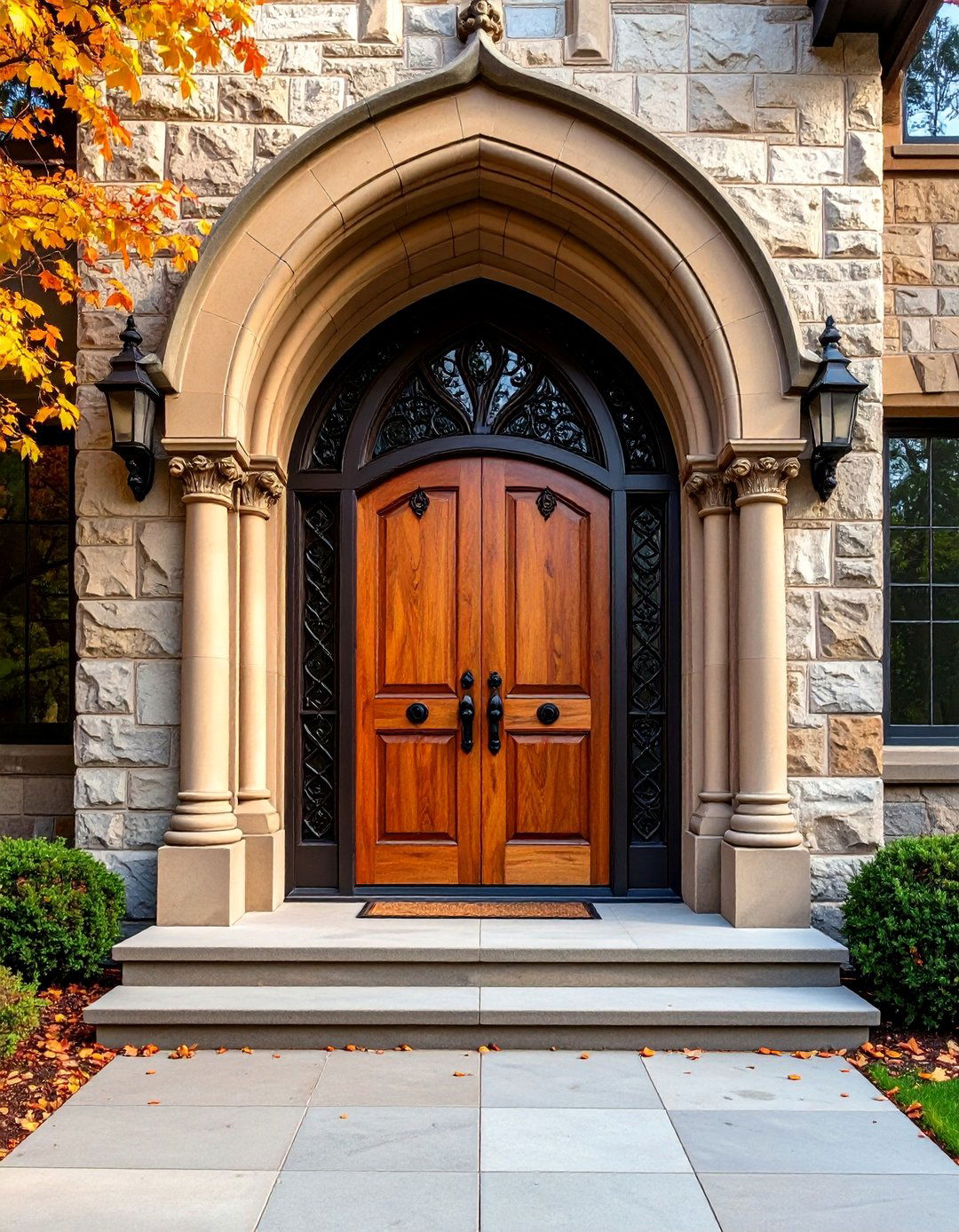
Flying buttresses represent one of the most recognizable elements of gothic church architecture, providing structural support while creating distinctive external architectural features. This gothic front door design incorporates architectural elements inspired by buttress construction, creating three-dimensional depth and gothic character through projecting side elements. The pointed arch led to development of pointed rib vaults and flying buttresses combined with elaborate tracery, representing integrated structural and decorative systems. Side pilasters, engaged columns, or projecting moldings can echo buttress forms while providing mounting points for hardware, lighting, or decorative elements. These features add architectural weight and presence that enhances the door's gothic character while creating shadow patterns that emphasize three-dimensional form. The design works particularly well with stone or masonry construction where the buttress elements can appear to emerge naturally from the wall surface, creating authentic gothic architectural relationships.
20. Gothic Front Door with Medieval Timber Framing
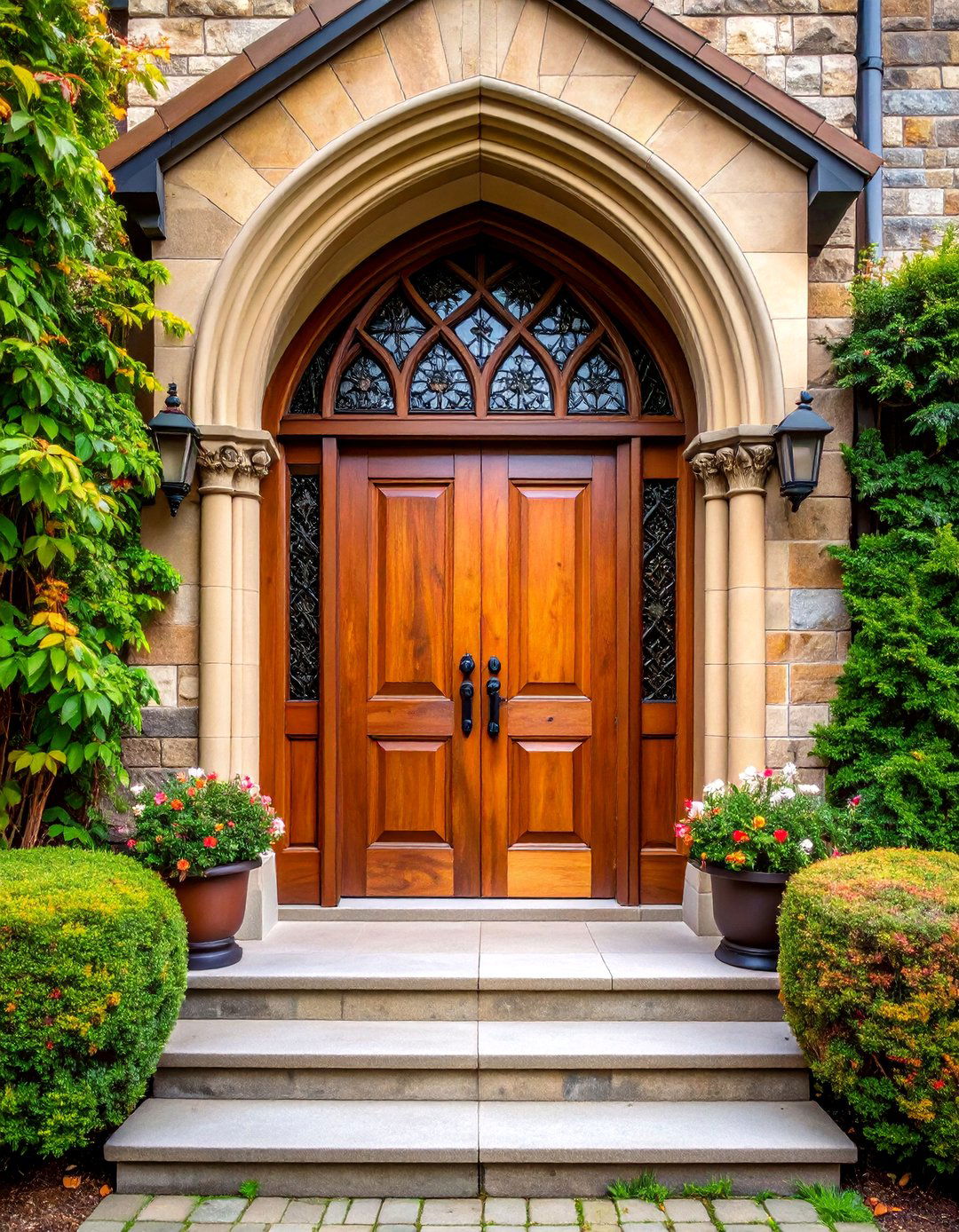
Gothic frame-and-plank construction features vertical planks attached to basic frames using mortise and tenon joinery methods that provide stability, strength, and traditional appearance. This gothic front door showcases exposed timber framing that celebrates medieval construction techniques while creating distinctive visual patterns. Using highest quality full-length solid timber with age-old mortise and tenon joinery creates products that stand the test of time, reflecting traditional craftsmanship that built doors to last forever. The frame elements can feature decorative chamfers, carved details, or contrasting wood species that emphasize the structural system while adding visual interest. Traditional finishes might include natural oil treatments that highlight wood grain while providing weather protection. This construction method creates authentic gothic character while demonstrating traditional building techniques that connect contemporary homes to medieval craftsmanship traditions. The exposed framing adds texture and depth that distinguishes these doors from conventional residential entrance designs.
Conclusion:
Gothic front doors offer homeowners the opportunity to create dramatic, historically-inspired entrances that combine medieval craftsmanship with modern functionality. From cathedral pointed arches to hand-forged iron hardware, these designs provide timeless elegance that enhances any architectural style. Whether incorporating stained glass windows, carved wood panels, or traditional timber framing, gothic doors create impressive statements that reflect both personal taste and architectural heritage. The investment in authentic materials and traditional construction methods ensures these entrances will become cherished architectural features that add lasting value and character to any home.



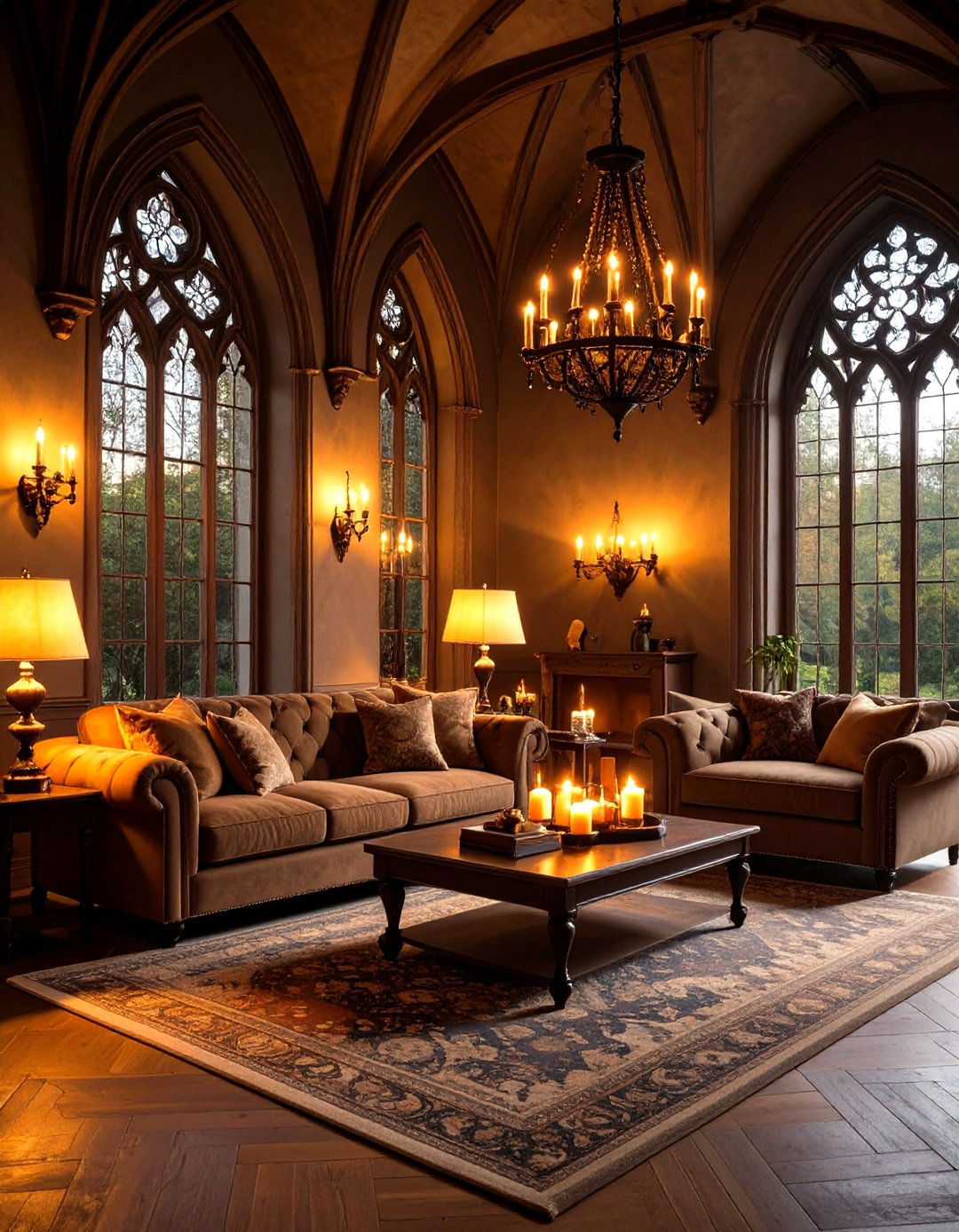
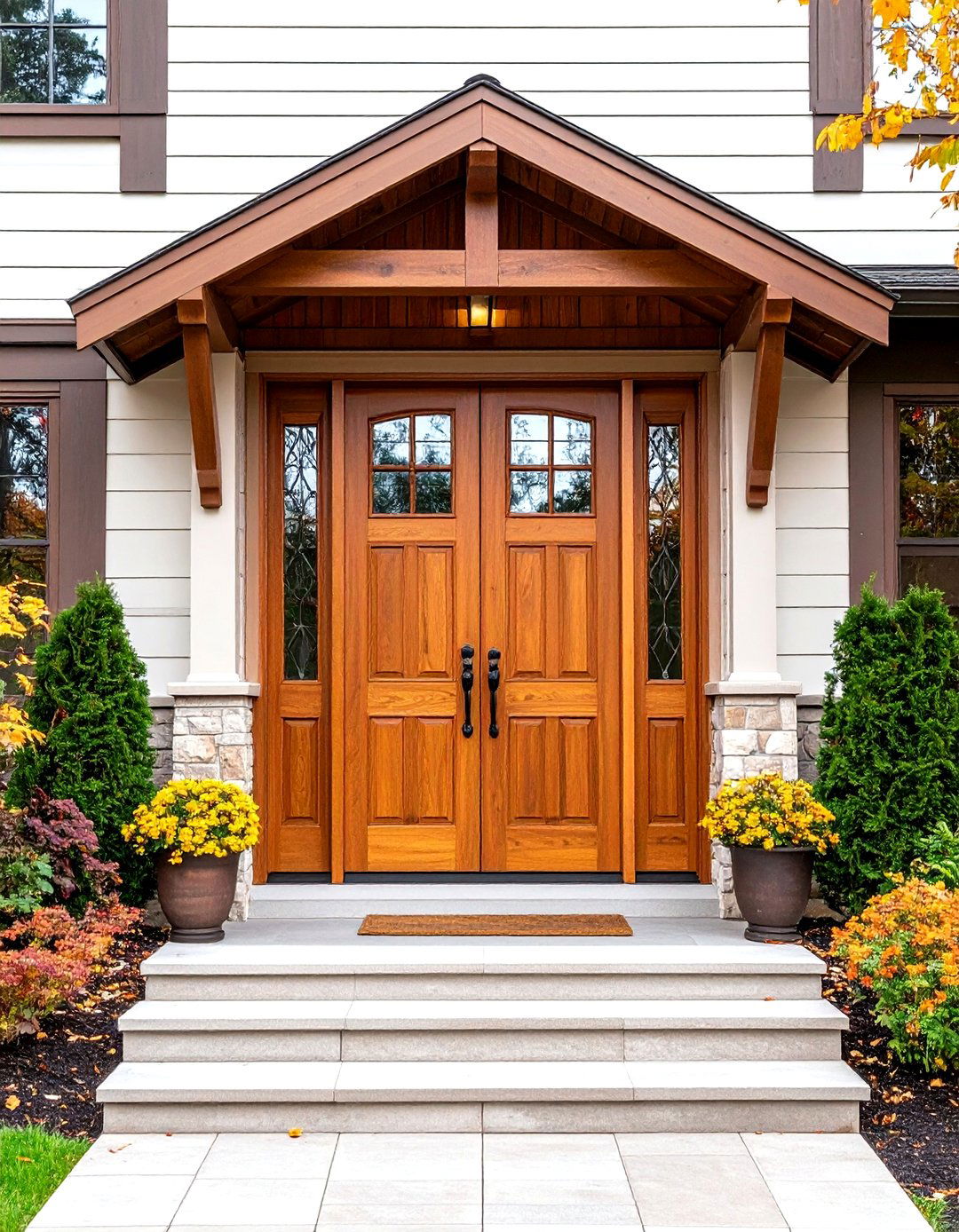
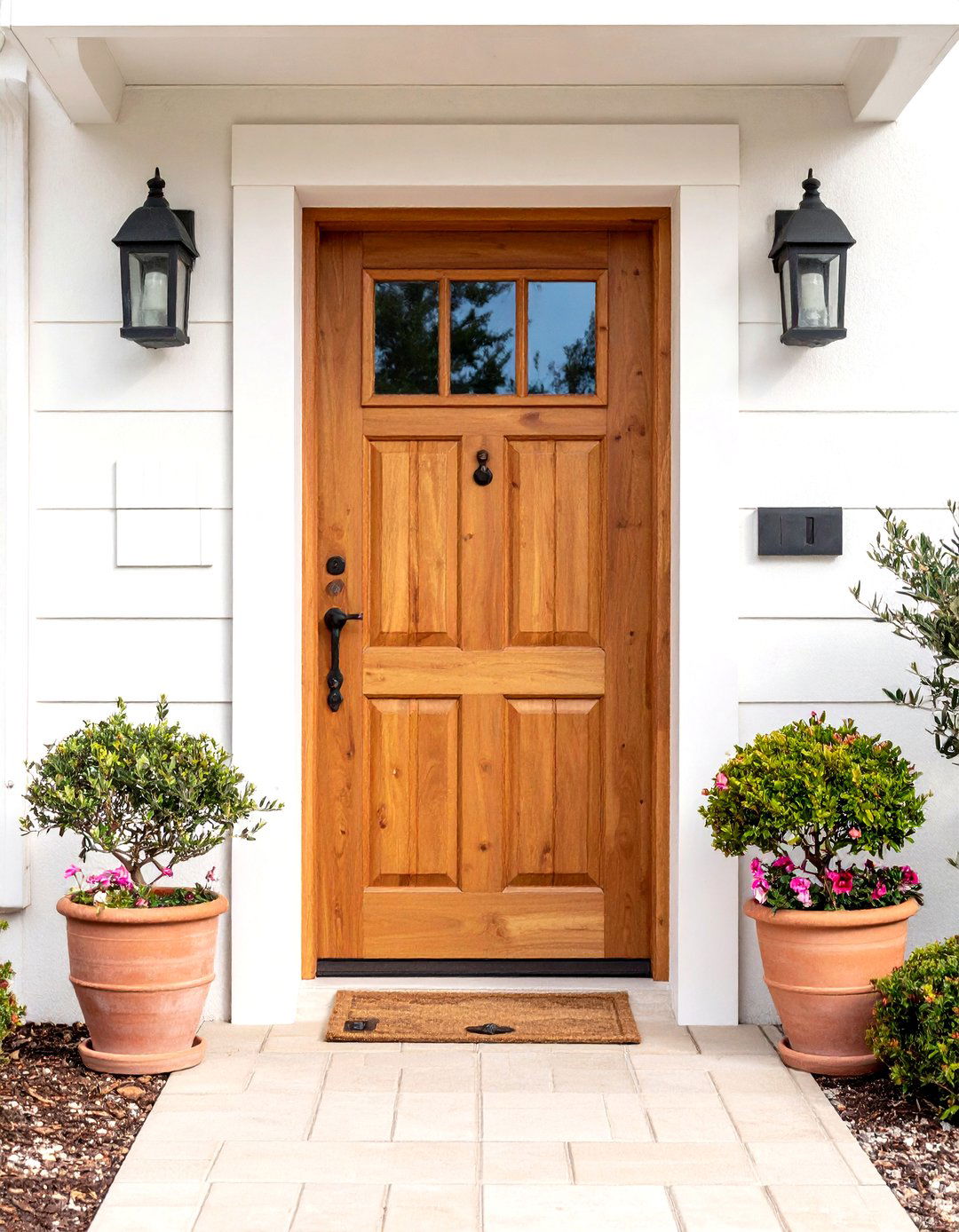
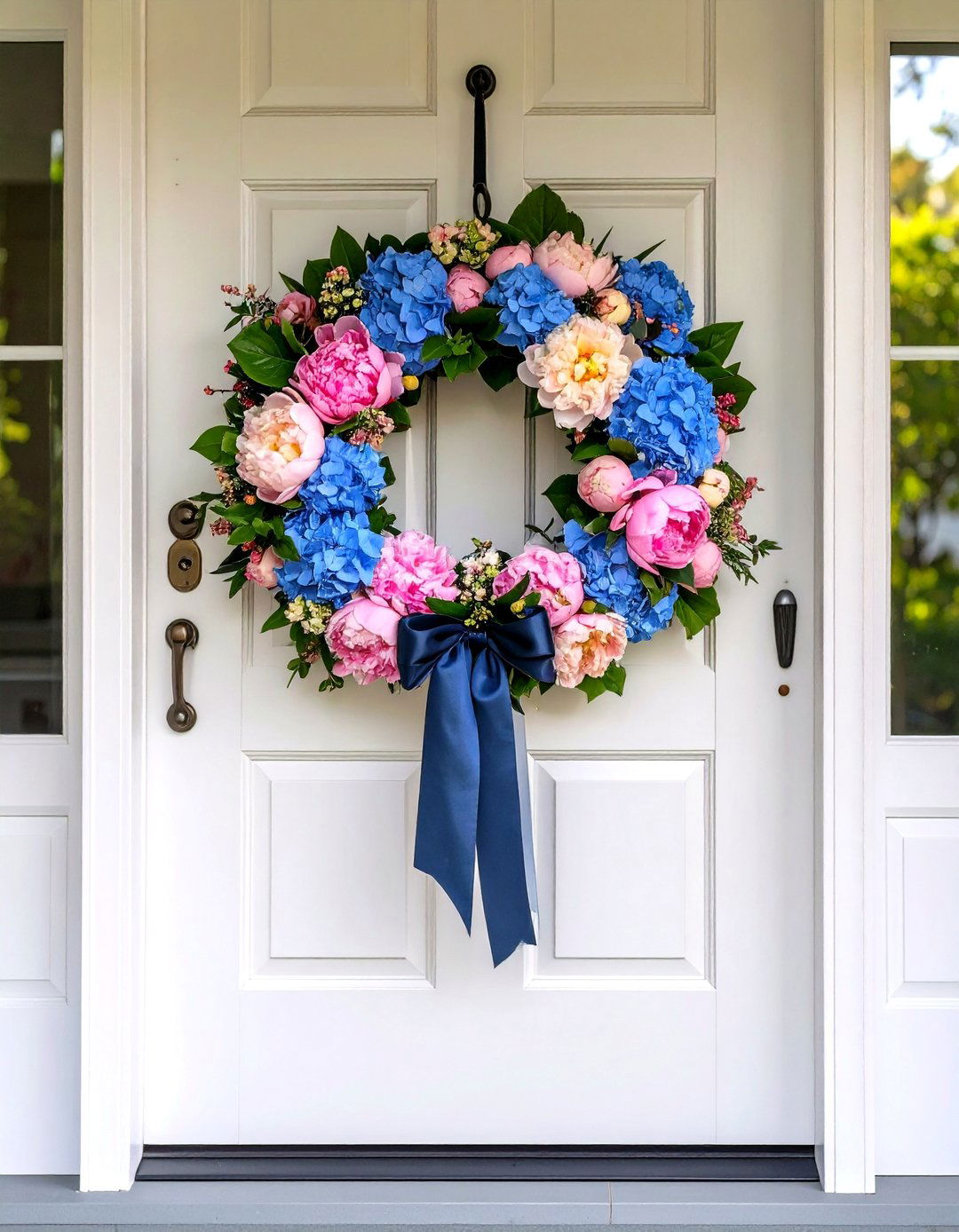
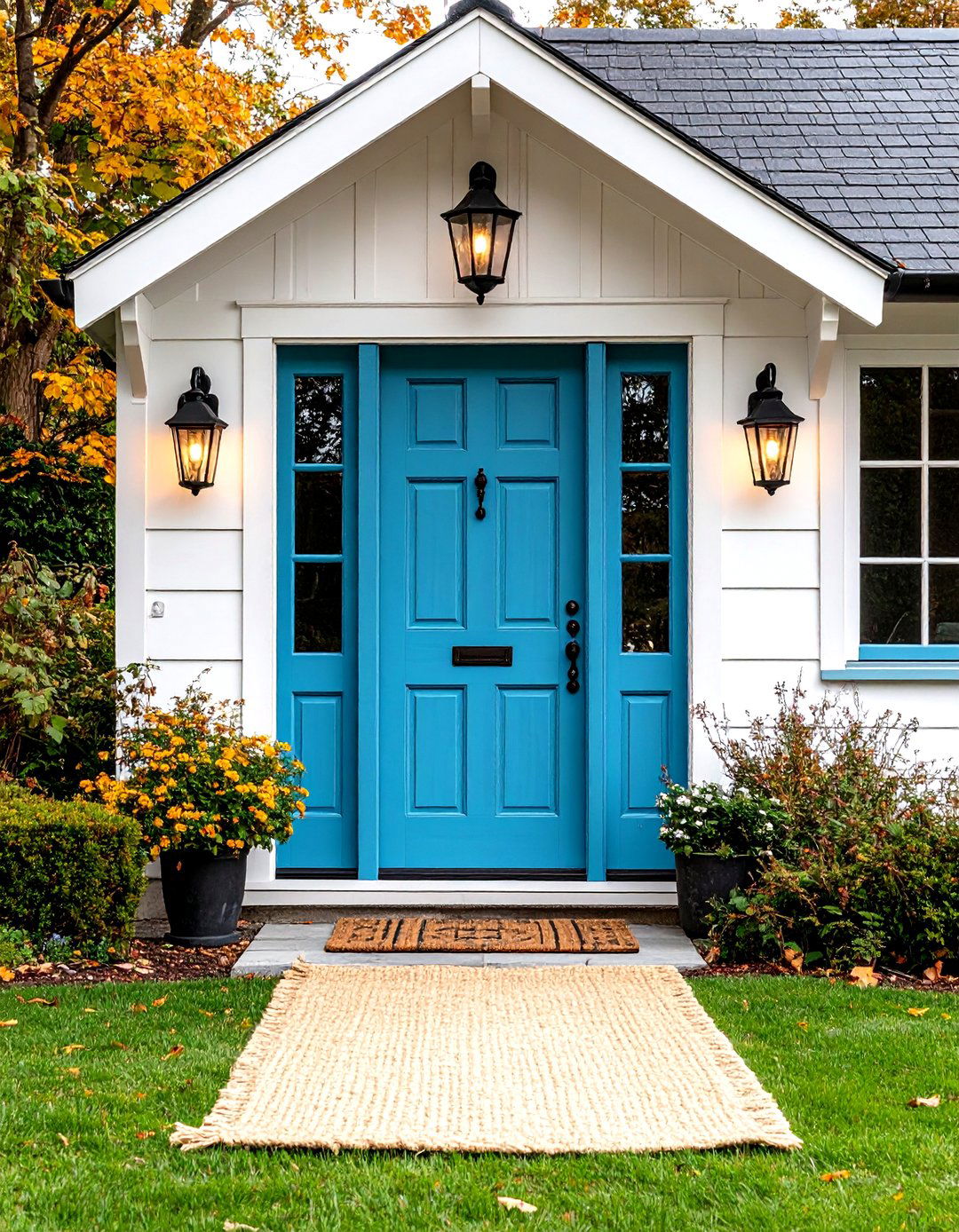
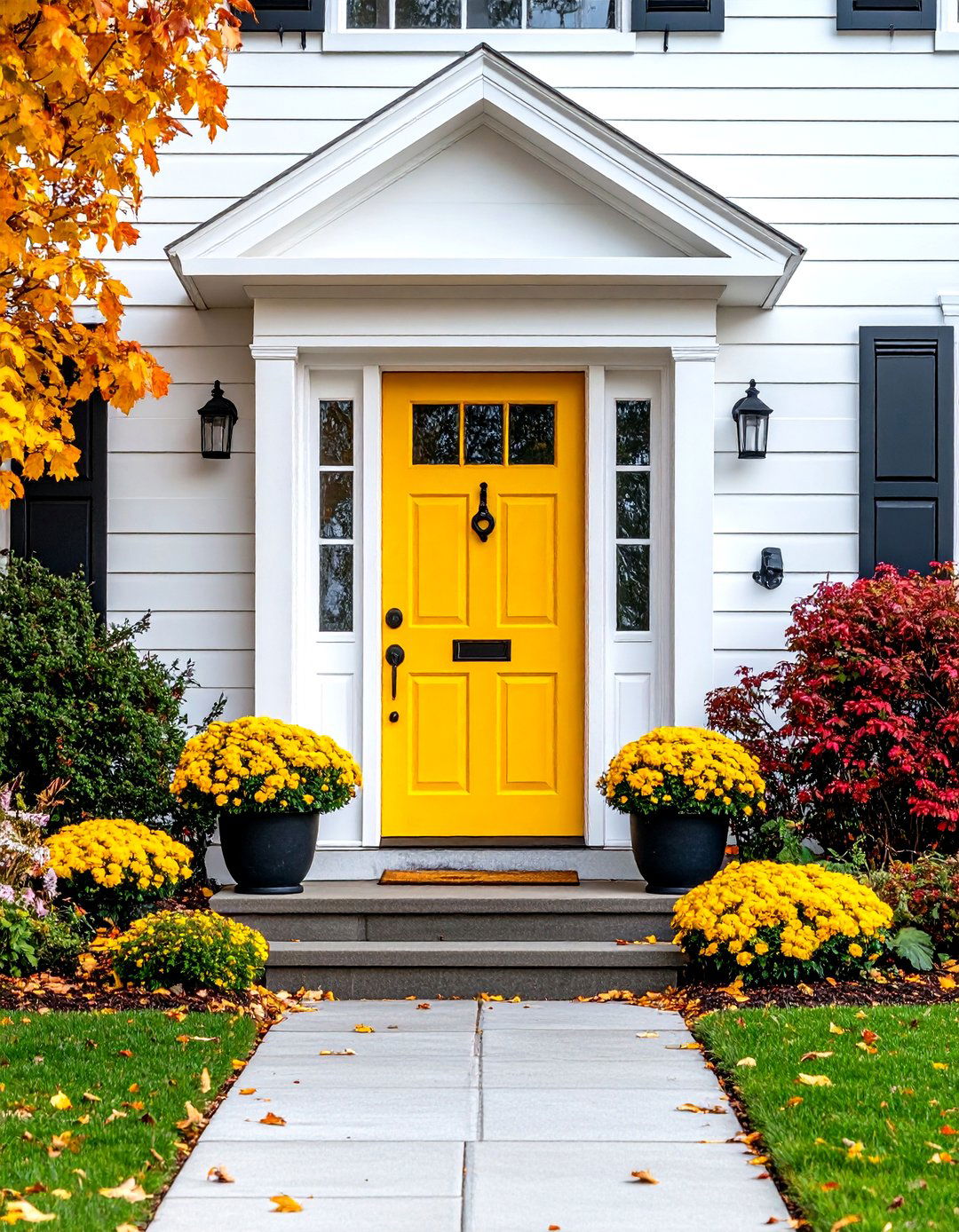

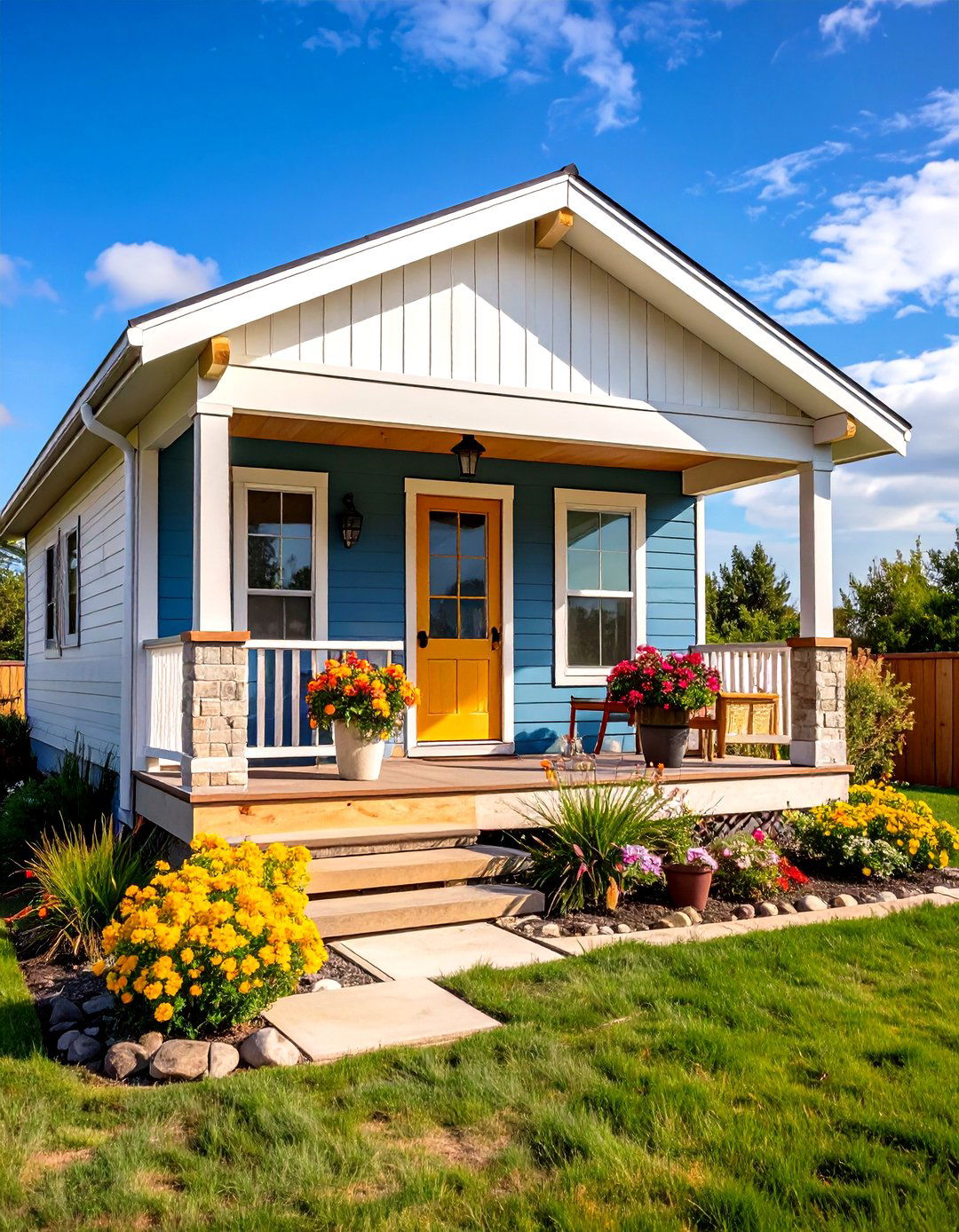
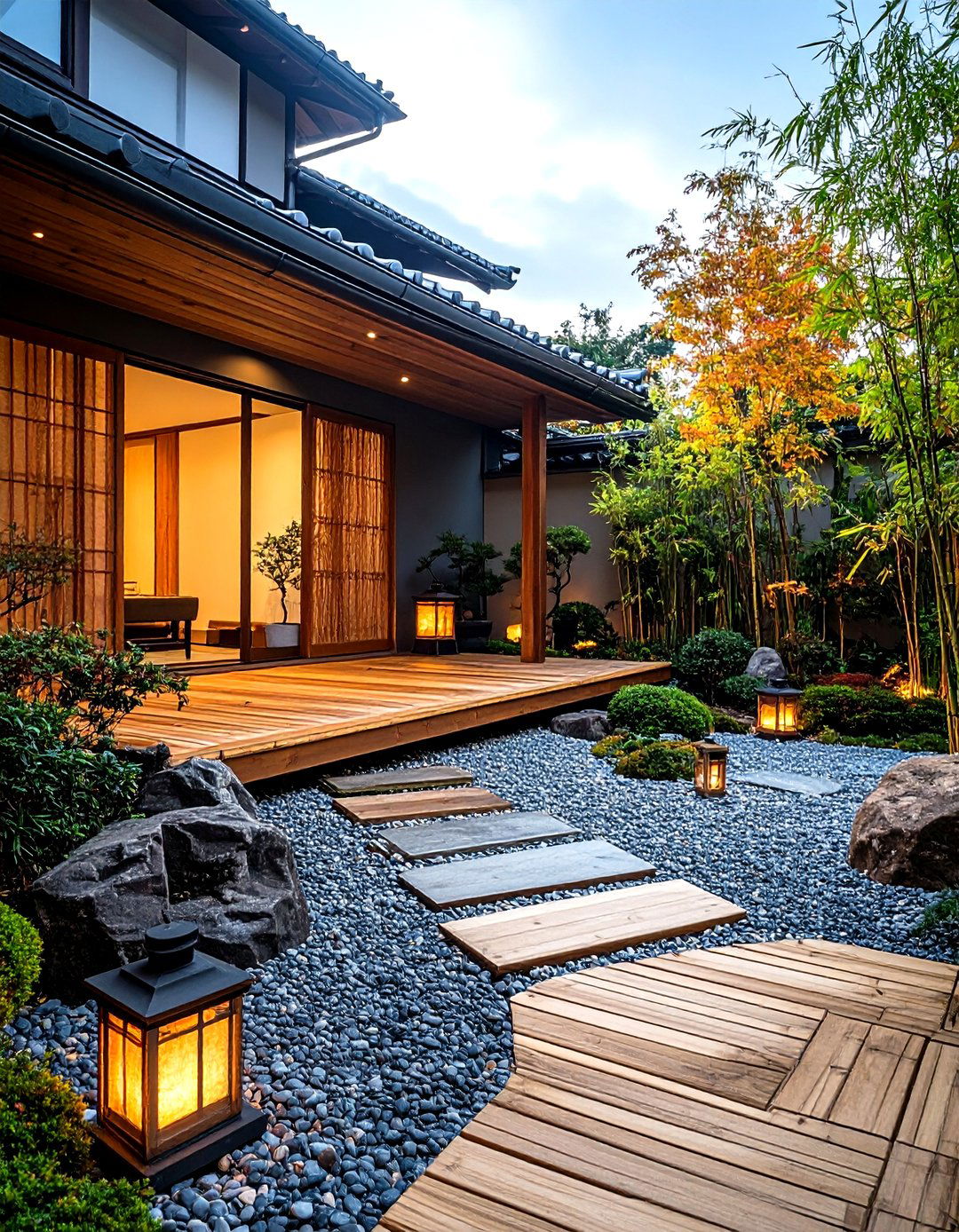
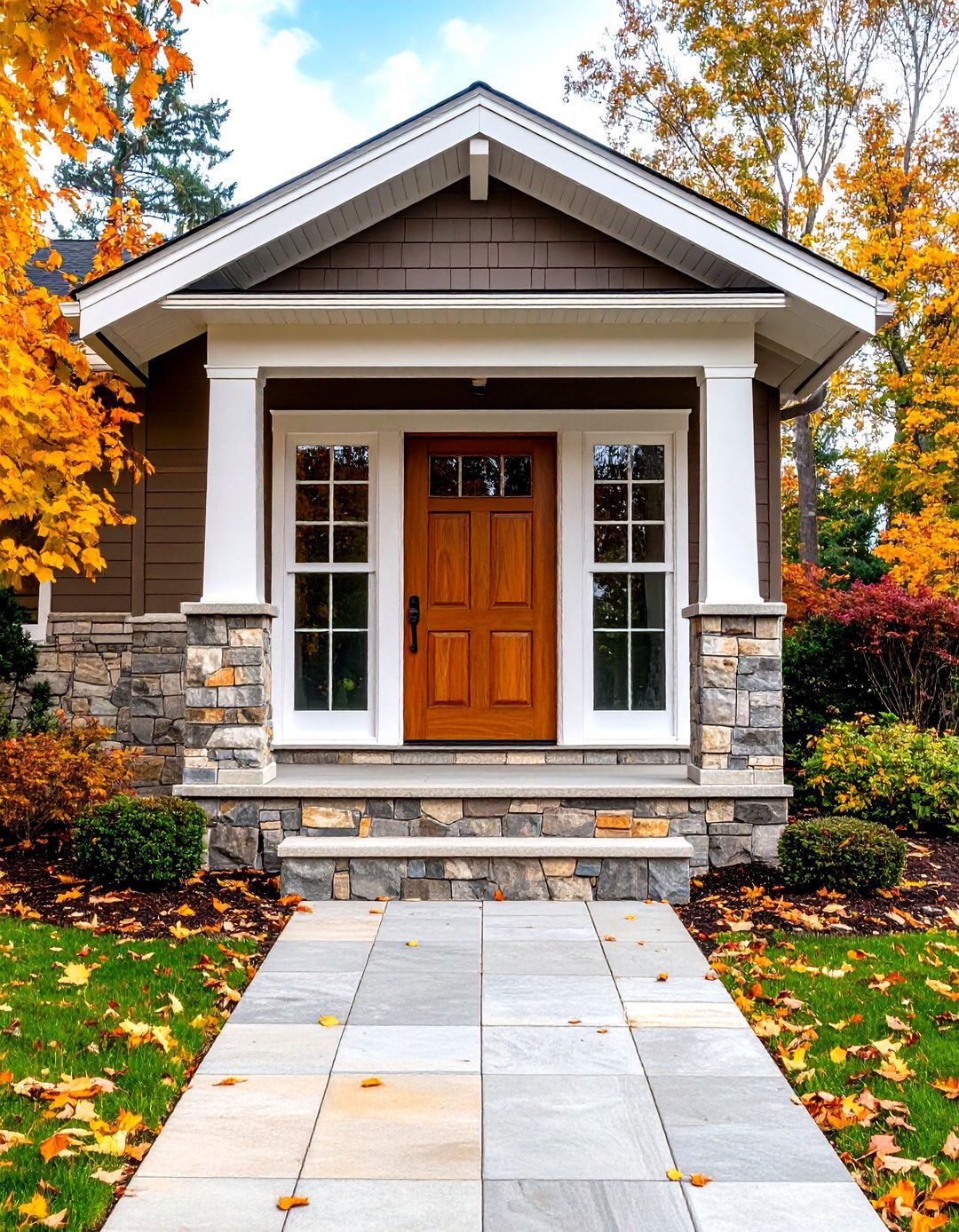
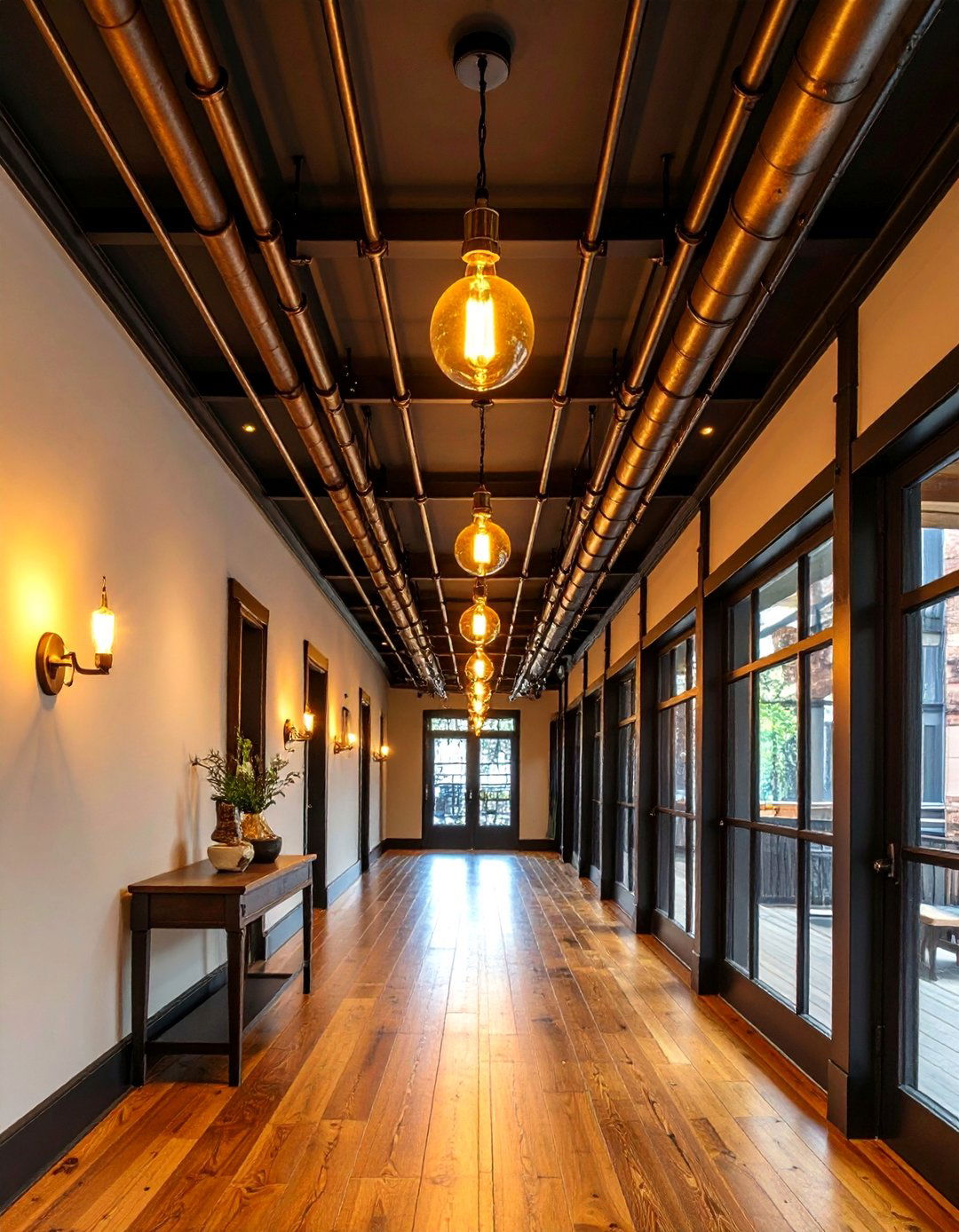
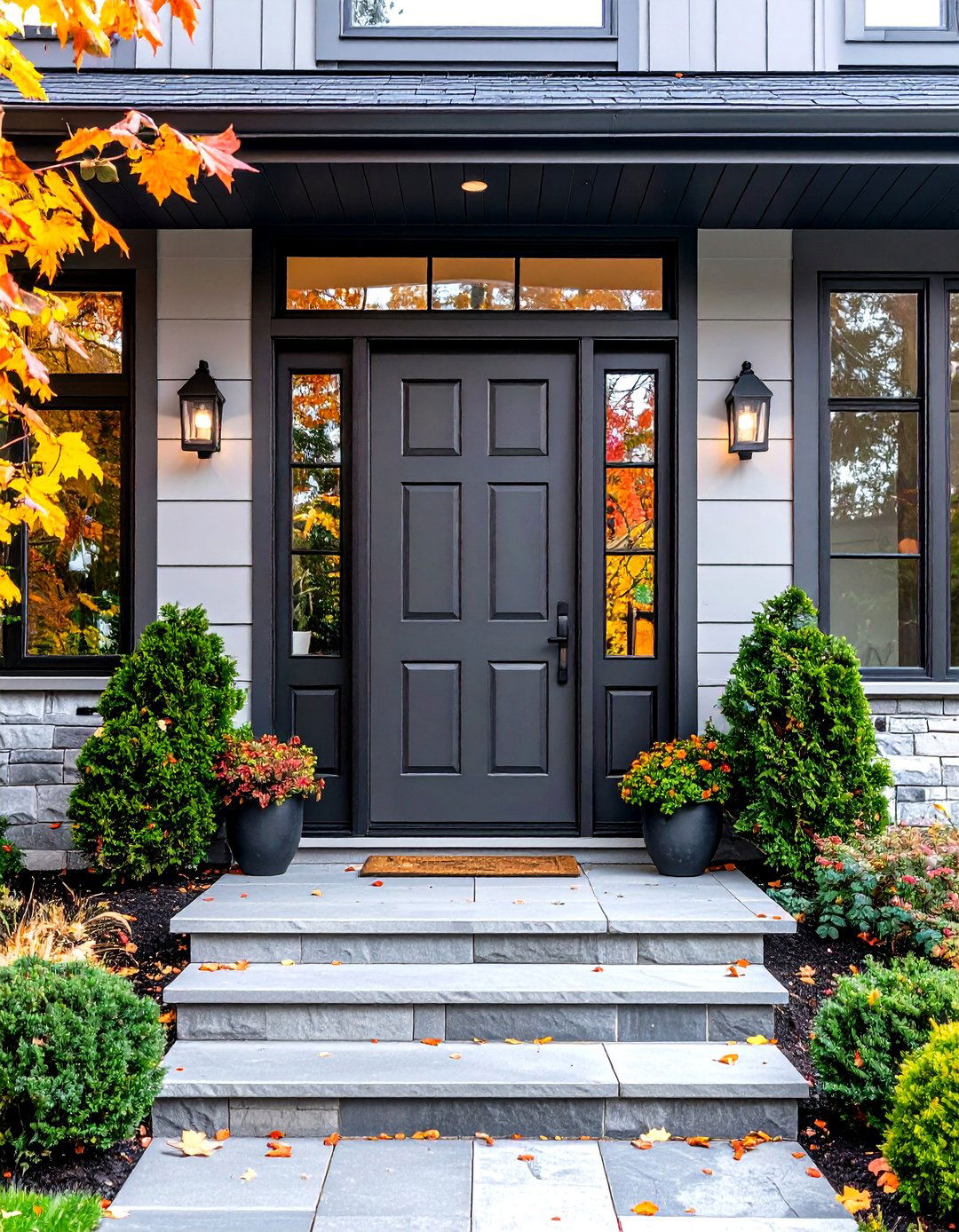
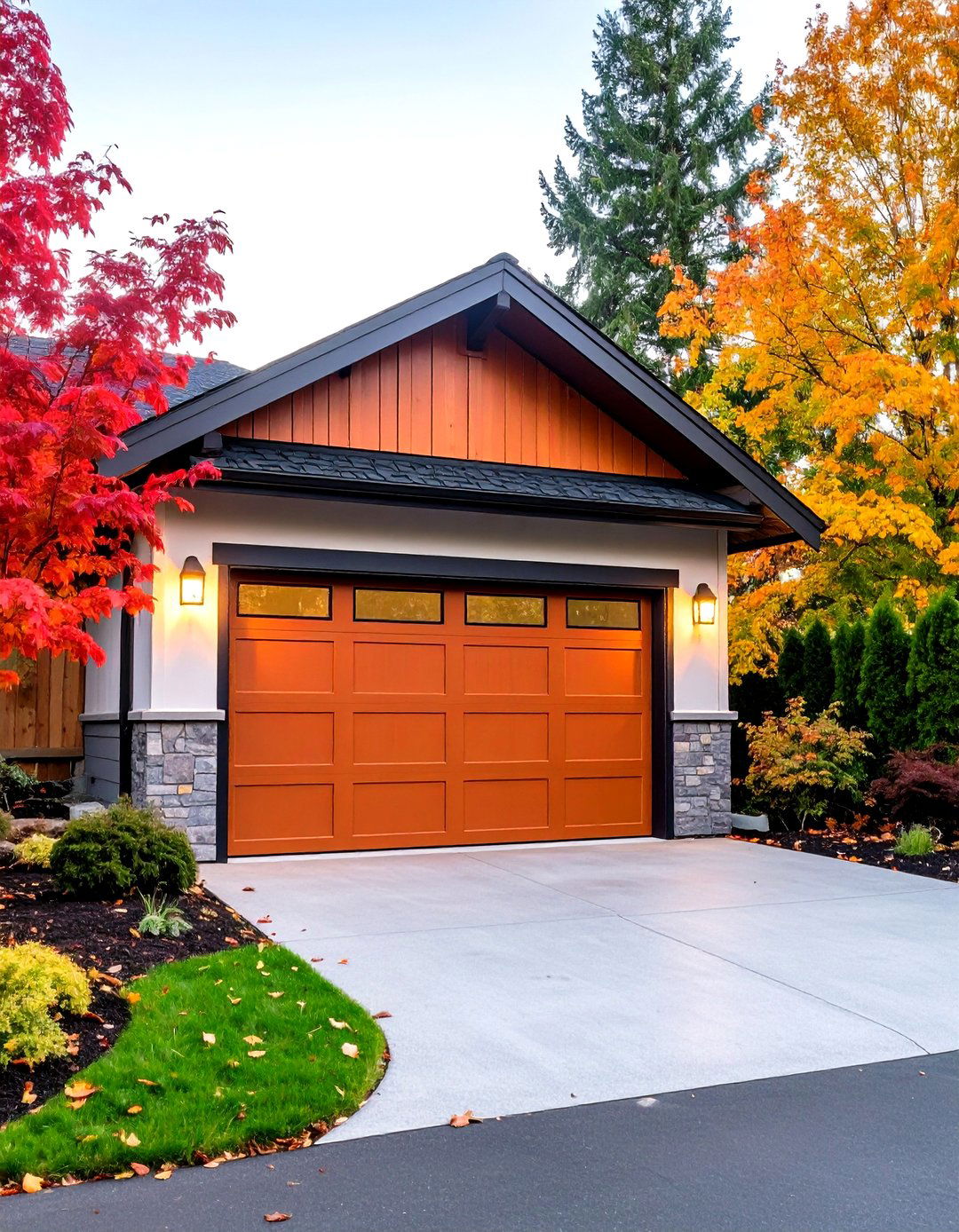
Leave a Reply